Polycyclic compound and organic electroluminescence device including the same
Nakano , et al.
U.S. patent number 10,714,693 [Application Number 15/474,030] was granted by the patent office on 2020-07-14 for polycyclic compound and organic electroluminescence device including the same. This patent grant is currently assigned to Kyushu University, National University Corporation, Samsung Display Co., Ltd.. The grantee listed for this patent is KYUSHU UNIVERSITY, NATIONAL UNIVERSITY CORPORATION, SAMSUNG DISPLAY CO., LTD.. Invention is credited to Nobutaka Akashi, Yoshimasa Fujita, JiYoung Lee, Hiromi Nakano, Shuri Sato, Takuma Yasuda.






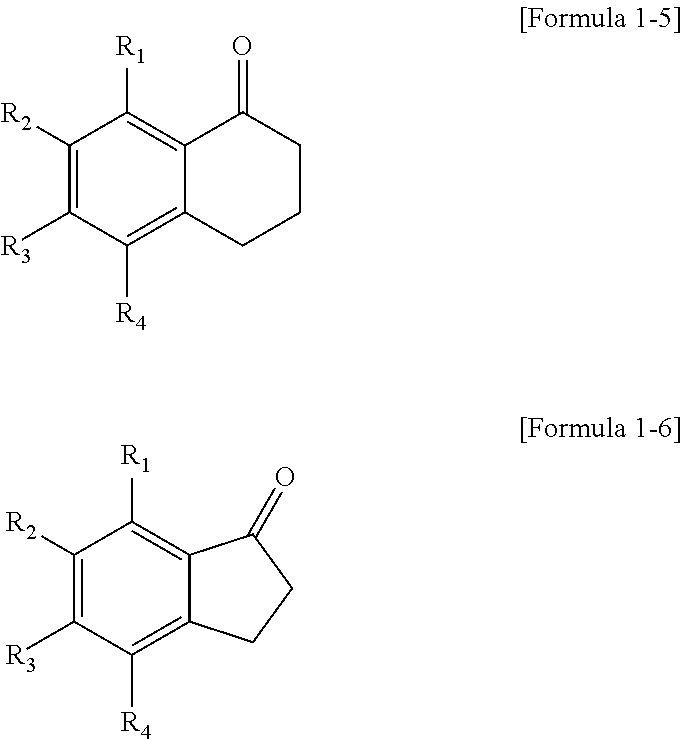
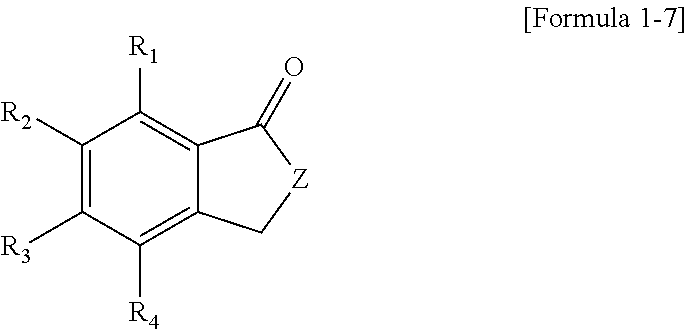




View All Diagrams
| United States Patent | 10,714,693 |
| Nakano , et al. | July 14, 2020 |
Polycyclic compound and organic electroluminescence device including the same
Abstract
A polycyclic compound and an organic electroluminescence device including the same. The polycyclic compound according to an example embodiment is represented by the following Formula 1. ##STR00001## wherein in Formula 1, Cy1 is carbonyl-containing five- or six-membered and substituted or unsubstituted cyclic hydrocarbon or substituted or unsubstituted heterocycle, and R.sub.1 to R.sub.4 are each independently a hydrogen atom or a group represented by the following Formula 2 or 3. ##STR00002##
| Inventors: | Nakano; Hiromi (Yokohama, JP), Sato; Shuri (Yokohama, JP), Fujita; Yoshimasa (Yokohama, JP), Akashi; Nobutaka (Yokohama, JP), Yasuda; Takuma (Fukuoka, JP), Lee; JiYoung (Fukuoka, JP) | ||||||||||
|---|---|---|---|---|---|---|---|---|---|---|---|
| Applicant: |
|
||||||||||
| Assignee: | Samsung Display Co., Ltd.
(Yongin-si, KR) Kyushu University, National University Corporation (Fukuoka-shi, JP) |
||||||||||
| Family ID: | 60483886 | ||||||||||
| Appl. No.: | 15/474,030 | ||||||||||
| Filed: | March 30, 2017 |
Prior Publication Data
| Document Identifier | Publication Date | |
|---|---|---|
| US 20170352817 A1 | Dec 7, 2017 | |
Foreign Application Priority Data
| Jun 2, 2016 [KR] | 10-2016-0068876 | |||
| Current U.S. Class: | 1/1 |
| Current CPC Class: | H01L 51/0052 (20130101); H01L 51/0072 (20130101); H01L 51/0073 (20130101); H01L 51/0061 (20130101); C07D 491/107 (20130101); C09K 11/06 (20130101); C07D 405/04 (20130101); H01L 51/0071 (20130101); C09K 2211/1033 (20130101); C09K 2211/1007 (20130101); C09K 2211/1029 (20130101); C09K 2211/1088 (20130101); H01L 51/5012 (20130101) |
| Current International Class: | H01L 51/54 (20060101); H01L 51/00 (20060101); C09K 11/06 (20060101); C07D 405/04 (20060101); C07D 491/107 (20060101); H01L 51/50 (20060101) |
References Cited [Referenced By]
U.S. Patent Documents
| 2015/0280138 | October 2015 | Xu et al. |
| 2016/0141516 | May 2016 | Numata |
| 2012-138585 | Jul 2012 | JP | |||
| 2016-210913 | Dec 2016 | JP | |||
| 10-2013-0010015 | Jan 2013 | KR | |||
| 10-2015-0030132 | Mar 2015 | KR | |||
| WO 2010/134350 | Nov 2010 | WO | |||
| WO 2013/081088 | Jun 2013 | WO | |||
| WO 2015/002213 | Jan 2015 | WO | |||
| WO-2016046034 | Mar 2016 | WO | |||
Other References
|
Liu et al. Adv. Mater. 2016, 26, 2002-2008. (Year: 2016). cited by examiner. |
Primary Examiner: Bohaty; Andrew K
Attorney, Agent or Firm: Lewis Roca Rothgerber Christie LLP
Claims
What is claimed is:
1. A polycyclic compound represented by the following Formula 1: ##STR00130## wherein in Formula 1, Cy1 is a substituted or unsubstituted five- or six-membered cyclic hydrocarbon containing a single carbonyl-group, or a substituted or unsubstituted five- or six-membered heterocycle containing a single carbonyl-group, and R.sub.1 to R.sub.4 are each independently a hydrogen atom or a group represented by one of the following Formula 2 or 3, ##STR00131## wherein in Formulae 2 and 3, L is a direct linkage or substituted or unsubstituted arylene group having 6 to 30 carbon atoms forming a ring, R.sub.5 to R.sub.14 are each independently a hydrogen atom, deuterium atom, halogen atom, substituted or unsubstituted silyl group, substituted or unsubstituted arylamine group, substituted or unsubstituted alkyl group having 1 to 15 carbon atoms, substituted or unsubstituted aryl group having 6 to 30 carbon atoms forming a ring, or substituted or unsubstituted heteroaryl group having 2 to 30 carbon atoms forming a ring, X is a direct linkage, CR.sub.15R.sub.16, SiR.sub.17R.sub.18, GeR.sub.19R.sub.20, NR.sub.21, O, or S, and R.sub.15 to R.sub.21 are each independently a substituted or unsubstituted aryl group having 6 to 12 carbon atoms forming a ring, where the aryl group may combine with an adjacent group to form a ring, wherein a substituent of the substituted five- or six-membered cyclic hydrocarbon containing a single carbonyl-group, and a substituent of the substituted five- or six-membered heterocycle containing a single carbonyl-group are each independently a deuterium atom, halogen atom, cyano group, nitro group, amino group, silyl group, boron group, arylamine group, phosphine oxide group, phosphine sulfide group, alkyl group, alkenyl group, aryl group, or heteroaryl group.
2. The polycyclic compound as claimed in claim 1, wherein the polycyclic compound represented by Formula 1 is represented by the following Formula 1-1 or 1-2: ##STR00132## wherein in Formulae 1-1 and 1-2, Cy2 and Cy3 are each independently a substituted or unsubstituted cyclic hydrocarbon or substituted or unsubstituted heterocycle, and R.sub.1 to R.sub.4 are the same as defined in claim 1.
3. The polycyclic compound as claimed in claim 1, wherein the polycyclic compound represented by Formula 1 is represented by the following Formula 1-3 or 1-4: ##STR00133## wherein in Formulae 1-3 and 1-4, Y is O or NR.sub.22, R.sub.22 is a hydrogen atom, substituted or unsubstituted alkyl group having 1 to 15 carbon atoms, or substituted or unsubstituted aryl group having 6 to 30 carbon atoms forming a ring, Ra to Rc are each independently a hydrogen atom or substituted or unsubstituted alkyl group having 1 to 15 carbon atoms, and R.sub.1 to R.sub.4 are the same as defined in claim 1.
4. The polycyclic compound as claimed in claim 1, wherein the polycyclic compound represented by Formula 1 is represented by the following Formula 1-5 or 1-6: ##STR00134## wherein in Formulae 1-5 and 1-6, R.sub.1 to R.sub.4 are the same as defined in claim 1.
5. The polycyclic compound as claimed in claim 1, wherein the polycyclic compound represented by Formula 1 is represented by the following Formula 1-7: ##STR00135## wherein in Formula 1-7, Z is O or NR.sub.23, R.sub.23 is hydrogen atom, substituted or unsubstituted alkyl group having 1 to 15 carbon atoms, or substituted or unsubstituted aryl group having 6 to 30 carbon atoms forming a ring, and R.sub.1 to R.sub.4 are the same as defined in claim 1.
6. The polycyclic compound as claimed in claim 1, wherein the polycyclic compound represented by Formula 1 is represented by the following Formula 1-8: ##STR00136## wherein in Formula 1-8, R.sub.1 to R.sub.4 are the same as defined in claim 1.
7. The polycyclic compound as claimed in claim 1, wherein the polycyclic compound represented by Formula 1 is represented by one of the following Formulae 1-9 to 1-24: ##STR00137## ##STR00138## ##STR00139## wherein in Formulae 1-9 to 1-24, R.sub.1 to R.sub.4 are the same as defined in claim 1.
8. The polycyclic compound as claimed in claim 1, wherein one of R.sub.2 and R.sub.3 is represented by Formula 2 or 3, and the other one of R.sub.2 and R.sub.3, R.sub.1, and R.sub.4 are a hydrogen atom.
9. The polycyclic compound as claimed in claim 1, wherein L is a direct linkage.
10. The polycyclic compound as claimed in claim 1, wherein R.sub.1 to R.sub.4 are each independently a hydrogen atom or a group represented by one of Formula 2 and the following Formulae 3-1 to 3-4: ##STR00140## wherein in Formulae 3-1 to 3-4, L, R.sub.5 to R.sub.18, and R.sub.21 are the same as defined in claim 1.
11. The polycyclic compound as claimed in claim 1, wherein R.sub.1 to R.sub.4 are each independently a hydrogen atom or one of Formula 2 and the following Formulae 3-5 to 3-11: ##STR00141## ##STR00142## wherein, in Formulae 3-5 to 3-11, G.sub.1 and G.sub.2 are each independently a hydrogen atom, deuterium atom, halogen atom, substituted or unsubstituted silyl group, substituted or unsubstituted arylamine group, substituted or unsubstituted alkyl group having 1 to 15 carbon atoms, substituted or unsubstituted aryl group having 6 to 30 carbon atoms forming a ring, or substituted or unsubstituted heteroaryl group having 2 to 30 carbon atoms forming a ring, p and q are each independently an integer of 0 to 4, and L is the same as defined in claim 1.
12. The polycyclic compound as claimed in claim 1, wherein R.sub.5 to R.sub.14 are each independently a hydrogen atom, halogen atom, trialkylsilyl group, diphenylamine group, methyl group, phenyl group, or carbazole group.
13. The polycyclic compound as claimed in claim 1, wherein the polycyclic compound represented by Formula 1 is one of compounds represented in the following Compound Group 1: ##STR00143## ##STR00144## ##STR00145## ##STR00146## ##STR00147## ##STR00148## ##STR00149## ##STR00150## ##STR00151## ##STR00152## ##STR00153## ##STR00154## ##STR00155## ##STR00156## ##STR00157## ##STR00158## ##STR00159## ##STR00160## ##STR00161## ##STR00162## ##STR00163## ##STR00164## ##STR00165## ##STR00166## ##STR00167## ##STR00168## ##STR00169## ##STR00170## ##STR00171## ##STR00172## ##STR00173## ##STR00174## ##STR00175## ##STR00176## ##STR00177## ##STR00178## ##STR00179## ##STR00180## ##STR00181## ##STR00182## ##STR00183## ##STR00184## ##STR00185## ##STR00186## ##STR00187## ##STR00188## ##STR00189## ##STR00190## ##STR00191## ##STR00192## ##STR00193## ##STR00194## ##STR00195## ##STR00196## ##STR00197## ##STR00198## ##STR00199## ##STR00200## ##STR00201## ##STR00202## ##STR00203## ##STR00204## ##STR00205## ##STR00206## ##STR00207## ##STR00208## ##STR00209## ##STR00210## ##STR00211## ##STR00212## ##STR00213## ##STR00214## ##STR00215## ##STR00216## ##STR00217## ##STR00218## ##STR00219## ##STR00220## ##STR00221## ##STR00222## ##STR00223## ##STR00224## ##STR00225## ##STR00226## ##STR00227## ##STR00228## ##STR00229## ##STR00230## ##STR00231## ##STR00232## ##STR00233##
14. An organic electroluminescence device comprising: a first electrode; an emission layer; and a second electrode, the emission layer being between the first electrode and the second electrode, the emission layer including a polycyclic compound represented by the following Formula 1: ##STR00234## wherein in Formula 1, Cy1 is a substituted or unsubstituted five- or six-membered cyclic hydrocarbon containing a single carbonyl-group, or a substituted or unsubstituted five- or six-membered heterocycle containing a single carbonyl-group, and R.sub.1 to R.sub.4 are each independently a hydrogen atom or a group represented by the following Formula 2 or 3, ##STR00235## wherein in Formulae 2 and 3, L is a direct linkage or substituted or unsubstituted arylene group having 6 to 30 carbon atoms forming a ring, R.sub.5 to R.sub.14 are each independently a hydrogen atom, deuterium atom, halogen atom, substituted or unsubstituted silyl group, substituted or unsubstituted arylamine group, substituted or unsubstituted alkyl group having 1 to 15 carbon atoms, substituted or unsubstituted aryl group having 6 to 30 carbon atoms forming a ring, or substituted or unsubstituted heteroaryl group having 2 to 30 carbon atoms forming a ring, X is a direct linkage, CR.sub.15R.sub.16, SiR.sub.17R.sub.18, GeR.sub.19R.sub.20, NR.sub.21, O, or S, and R.sub.15 to R.sub.21 are each independently a substituted or unsubstituted aryl group having 6 to 12 carbon atoms forming a ring, where the aryl group may combine with an adjacent group to form a ring, wherein a substituent of the substituted five- or six-membered cyclic hydrocarbon containing a single carbonyl-group, and a substituent of substituted five- or six-membered heterocycle containing a single carbonyl-group are each independently a deuterium atom, halogen atom, cyano group, nitro group, amino group, silyl group, boron group, arylamine group, phosphine oxide group, phosphine sulfide group, alkyl group, alkenyl group, aryl group, or heteroaryl group.
15. The organic electroluminescence device as claimed in claim 14, wherein the polycyclic compound represented by Formula 1 has a value of absolute difference of about 0.2 eV or less between a singlet energy level and a triplet energy level.
16. The organic electroluminescence device as claimed in claim 14, wherein the polycyclic compound represented by Formula 1 exhibits thermally activated delayed fluorescence.
17. The organic electroluminescence device as claimed in claim 14, wherein the polycyclic compound represented by Formula 1 is represented by one of the following Formulae 1-3 to 1-8: ##STR00236## wherein in Formulae 1-3 and 1-4, Y is O or NR.sub.22, R.sub.22 is a hydrogen atom, substituted or unsubstituted alkyl group having 1 to 15 carbon atoms, or substituted or unsubstituted aryl group having 6 to 30 carbon atoms forming a ring, Ra to Rc are each independently a hydrogen atom or substituted or unsubstituted alkyl group having 1 to 15 carbon atoms, wherein in Formula 1-7, Z is O or NR.sub.23, R.sub.23 is a hydrogen atom, substituted or unsubstituted alkyl group having 1 to 15 carbon atoms, or substituted or unsubstituted aryl group having 6 to 30 carbon atoms forming a ring, and wherein in Formulae 1-3 to 1-8, R.sub.1 to R.sub.4 are the same as defined in claim 14.
18. The organic electroluminescence device as claimed in claim 14, wherein: one of R.sub.2 and R.sub.3 is represented by Formula 2 or 3, and the remaining one of R.sub.2 and R.sub.3, R.sub.1, and R.sub.4 are a hydrogen atom.
19. The organic electroluminescence device as claimed in claim 14, wherein L is a direct linkage.
20. The organic electroluminescence device as claimed in claim 14, wherein the polycyclic compound represented by Formula 1 is one of compounds represented in the following Compound Group 1: ##STR00237## ##STR00238## ##STR00239## ##STR00240## ##STR00241## ##STR00242## ##STR00243## ##STR00244## ##STR00245## ##STR00246## ##STR00247## ##STR00248## ##STR00249## ##STR00250## ##STR00251## ##STR00252## ##STR00253## ##STR00254## ##STR00255## ##STR00256## ##STR00257## ##STR00258## ##STR00259## ##STR00260## ##STR00261## ##STR00262## ##STR00263## ##STR00264## ##STR00265## ##STR00266## ##STR00267## ##STR00268## ##STR00269## ##STR00270## ##STR00271## ##STR00272## ##STR00273## ##STR00274## ##STR00275## ##STR00276## ##STR00277## ##STR00278## ##STR00279## ##STR00280## ##STR00281## ##STR00282## ##STR00283## ##STR00284## ##STR00285## ##STR00286## ##STR00287## ##STR00288## ##STR00289## ##STR00290## ##STR00291## ##STR00292## ##STR00293## ##STR00294## ##STR00295## ##STR00296## ##STR00297## ##STR00298## ##STR00299## ##STR00300## ##STR00301## ##STR00302## ##STR00303## ##STR00304## ##STR00305## ##STR00306## ##STR00307## ##STR00308## ##STR00309## ##STR00310## ##STR00311## ##STR00312## ##STR00313## ##STR00314## ##STR00315## ##STR00316## ##STR00317## ##STR00318## ##STR00319## ##STR00320## ##STR00321## ##STR00322## ##STR00323## ##STR00324## ##STR00325## ##STR00326## ##STR00327##
Description
CROSS-REFERENCE TO RELATED APPLICATION
Korean Patent Application No. 10-2016-0068876, filed on Jun. 2, 2016, in the Korean Intellectual Property Office, and entitled: "Polycyclic Compound And Organic Electroluminescence Device Including the Same," is incorporated by reference herein in its entirety.
BACKGROUND
1. Field
Embodiments relate to a polycyclic compound and an organic electroluminescence device including the same.
2. Description of the Related Art
The development of an organic electroluminescence display as an image display is being actively conducted. The organic electroluminescence display is different from a liquid crystal display and is a so called self-luminescent display. The organic electroluminescence display may emit light via the recombination of holes and electrons injected from a first electrode and a second electrode in an emission layer, and light emission from a luminescent material including an organic compound in the emission layer.
SUMMARY
Embodiments are directed to a polycyclic compound represented by the following Formula 1:
##STR00003##
In Formula 1, Cy1 may be carbonyl-containing, five- or six-membered, substituted or unsubstituted cyclic hydrocarbon or substituted or unsubstituted heterocycle, and R.sub.1 to R.sub.4 may each independently be a hydrogen atom or a group represented by one of the following Formula 2 or 3,
##STR00004##
In Formulae 2 and 3, L may be a direct linkage or substituted or unsubstituted arylene group having 6 to 30 carbon atoms forming a ring, R.sub.5 to R.sub.14 may each independently be a hydrogen atom, deuterium atom, halogen atom, substituted or unsubstituted silyl group, substituted or unsubstituted arylamine group, substituted or unsubstituted alkyl group having 1 to 15 carbon atoms, substituted or unsubstituted aryl group having 6 to 30 carbon atoms forming a ring, or substituted or unsubstituted heteroaryl group having 2 to 30 carbon atoms forming a ring, X may be a direct linkage, CR.sub.15R.sub.16, SiR.sub.17R.sub.18, GeR.sub.19R.sub.20, NR.sub.21, O, or S, and R.sub.15 to R.sub.21 may each independently be a substituted or unsubstituted aryl group having 6 to 12 carbon atoms forming a ring, where the aryl group may combine with an adjacent group to form a ring.
The polycyclic compound represented by Formula 1 may be represented by the following Formula 1-1 or 1-2:
##STR00005##
In Formulae 1-1 and 1-2, Cy2 and Cy3 may each independently be a substituted or unsubstituted cyclic hydrocarbon or substituted or unsubstituted heterocycle, and R.sub.1 to R.sub.4 are the same as described herein.
The polycyclic compound represented by Formula 1 may be represented by the following Formula 1-3 or 1-4:
##STR00006##
In Formulae 1-3 and 1-4, Y may be O or NR.sub.22, R.sub.22 may be a hydrogen atom, substituted or unsubstituted alkyl group having 1 to 15 carbon atoms, or substituted or unsubstituted aryl group having 6 to 30 carbon atoms forming a ring, Ra to Rc may each independently be a hydrogen atom or substituted or unsubstituted alkyl group having 1 to 15 carbon atoms, and R.sub.1 to R.sub.4 are the same as described herein.
The polycyclic compound represented by Formula 1 may be represented by the following Formula 1-5 or 1-6:
##STR00007##
In Formulae 1-5 and 1-6, R.sub.1 to R.sub.4 are the same as described herein.
The polycyclic compound represented by Formula 1 may be represented by the following Formula 1-7:
##STR00008##
In Formula 1-7, Z may be O or NR.sub.23, R.sub.23 may be hydrogen atom, substituted or unsubstituted alkyl group having 1 to 15 carbon atoms, or substituted or unsubstituted aryl group having 6 to 30 carbon atoms forming a ring, and R.sub.1 to R.sub.4 are the same as described herein.
The polycyclic compound represented by Formula 1 may be represented by the following Formula 1-8:
##STR00009##
In Formula 1-8, R.sub.1 to R.sub.4 are the same as described herein.
The polycyclic compound represented by Formula 1 may be represented by one of the following Formulae 1-9 to 1-24:
##STR00010## ##STR00011## ##STR00012##
In Formulae 1-9 to 1-24, R.sub.1 to R.sub.4 are the same as described herein.
One of R.sub.2 and R.sub.3 may be represented by Formula 2 or 3, and the other one of R.sub.2 and R.sub.3, R.sub.1, and R.sub.4 may be a hydrogen atom.
L may be a direct linkage.
R.sub.1 to R.sub.4 may each independently be a hydrogen atom or a group represented by one of Formula 2 and the following Formulae 3-1 to 3-4:
##STR00013##
In Formulae 3-1 to 3-4, L, R.sub.5 to R.sub.18, and R.sub.21 are the same as described herein.
R.sub.1 to R.sub.4 may each independently be a hydrogen atom or one of Formula 2 and the following Formulae 3-5 to 3-11:
##STR00014## ##STR00015##
In Formulae 3-5 to 3-11, G.sub.1 and G.sub.2 may each independently be a hydrogen atom, deuterium atom, halogen atom, substituted or unsubstituted silyl group, substituted or unsubstituted arylamine group, substituted or unsubstituted alkyl group having 1 to 15 carbon atoms, substituted or unsubstituted aryl group having 6 to 30 carbon atoms forming a ring, or substituted or unsubstituted heteroaryl group having 2 to 30 carbon atoms forming a ring, p and q may each independently be an integer of 0 to 4, and L is the same as described herein.
R.sub.5 to R.sub.14 may each independently be a hydrogen atom, halogen atom, trialkylsilyl group, diphenylamine group, methyl group, phenyl group, or carbazole group.
The polycyclic compound represented by Formula 1 may be one of the compounds represented in Compound Group 1.
Embodiments are also directed to an organic electroluminescence device, including a first electrode, an emission layer; and a second electrode, the emission layer being between the first electrode and the second electrode, the emission layer including a polycyclic compound represented by the following Formula 1:
##STR00016##
In Formula 1, Cy1 may be carbonyl-containing five- or six-membered, substituted or unsubstituted cyclic hydrocarbon or substituted or unsubstituted heterocycle, and R.sub.1 to R.sub.4 may each independently be a hydrogen atom or a group represented by the following Formula 2 or 3,
##STR00017##
In Formulae 2 and 3, L may be a direct linkage or substituted or unsubstituted arylene group having 6 to 30 carbon atoms forming a ring, R.sub.5 to R.sub.14 may each independently be a hydrogen atom, deuterium atom, halogen atom, substituted or unsubstituted silyl group, substituted or unsubstituted arylamine group, substituted or unsubstituted alkyl group having 1 to 15 carbon atoms, substituted or unsubstituted aryl group having 6 to 30 carbon atoms forming a ring, or substituted or unsubstituted heteroaryl group having 2 to 30 carbon atoms forming a ring, X may be a direct linkage, CR.sub.15R.sub.16, SiR.sub.17R.sub.18, GeR.sub.19R.sub.20, NR.sub.21, O, or S, R.sub.15 to R.sub.21 may each independently be a substituted or unsubstituted aryl group having 6 to 12 carbon atoms forming a ring, where the aryl group may combine with an adjacent group to form a ring.
The polycyclic compound represented by Formula 1 may have a value of absolute difference of about 0.2 eV or less between a singlet energy level and a triplet energy level.
The polycyclic compound represented by Formula 1 may exhibit thermally activated delayed fluorescence.
The polycyclic compound represented by Formula 1 may be represented by one of the following Formulae 1-3 to 1-8:
##STR00018##
In Formulae 1-3 and 1-4, Y may be O or NR.sub.22, R.sub.22 may be hydrogen atom, substituted or unsubstituted alkyl group having 1 to 15 carbon atoms, or substituted or unsubstituted aryl group having 6 to 30 carbon atoms forming a ring, Ra to Rc may each independently be a hydrogen atom or substituted or unsubstituted alkyl group having 1 to 15 carbon atoms,
In Formula 1-7, Z may be O or NR.sub.23, R.sub.23 may be hydrogen atom, substituted or unsubstituted alkyl group having 1 to 15 carbon atoms, or substituted or unsubstituted aryl group having 6 to 30 carbon atoms forming a ring, and
In Formulae 1-3 to 1-8, R.sub.1 to R.sub.4 are the same as described herein.
One of R.sub.2 and R.sub.3 may be represented by Formula 2 or 3, and the remaining one of R.sub.2 and R.sub.3, R.sub.1, and R.sub.4 may be a hydrogen atom.
L may be a direct linkage.
The polycyclic compound represented by Formula 1 may one of the compounds represented in Compound Group 1.
BRIEF DESCRIPTION OF THE DRAWINGS
Features will become apparent to those of skill in the art by describing in detail example embodiments with reference to the attached drawings in which:
FIG. 1 illustrates a schematic cross-sectional view of an organic electroluminescence device according to an example embodiment; and
FIG. 2 illustrates a schematic cross-sectional view of an organic electroluminescence device according to an example embodiment.
DETAILED DESCRIPTION
Example embodiments will now be described more fully hereinafter with reference to the accompanying drawings; however, they may be embodied in different forms and should not be construed as limited to the embodiments set forth herein. Rather, these embodiments are provided so that this disclosure will be thorough and complete, and will fully convey example implementations to those skilled in the art.
In the drawing figures, the dimensions of layers and regions may be exaggerated for clarity of illustration. Like reference numerals refer to like elements throughout.
It will be understood that, although the terms first, second, etc., may be used herein to describe various elements, these elements should not be limited by these terms. These terms are only used to distinguish one element from another element. For example, a first element discussed below could be termed a second element, and similarly, a second element could be termed a first element. As used herein, the singular forms are intended to include the plural forms as well, unless the context clearly indicates otherwise.
It will be further understood that the terms "comprises" or "comprising," when used in this specification, specify the presence of stated features, numerals, steps, operations, elements, parts, or a combination thereof, but do not preclude the presence or addition of one or more other features, numerals, steps, operations, elements, parts, or a combination thereof. It will also be understood that when a layer, a film, a region, a plate, etc. is referred to as being `on` another part, it can be directly on the other part, or intervening layers may also be present. When a layer, a film, a region, a plate, etc., is referred to as being `under` another part, it can be directly under the other part, or intervening layers may also be present.
In the present disclosure, the symbol
##STR00019## means a position to be connected.
In the present disclosure, "substituted or unsubstituted" may mean substituted with at least one substituent selected from the group of a deuterium atom, halogen atom, cyano group, nitro group, amino group, silyl group, boron group, arylamine group, phosphine oxide group, phosphine sulfide group, alkyl group, alkenyl group, aryl group, and heteroaryl group or unsubstituted. In addition, each of the substituent illustrated above may be a substituted or unsubstituted. For example, biphenyl may be interpreted as aryl group, or phenyl substituted with phenyl group.
In the present disclosure, the term "forming a ring by combining with an adjacent group" may mean forming a substituted or unsubstituted cyclic hydrocarbon, or substituted or unsubstituted heterocycle by combining with an adjacent group. The cyclic hydrocarbon may include an aliphatic cyclic hydrocarbon and aromatic cyclic hydrocarbon. The heterocycle may include an aliphatic heterocycle and aromatic heterocycle. The cyclic hydrocarbon and heterocycle may be a monocycle or polycycle. In addition, the ring formed by combining with an adjacent group may be connected with another ring to form a spiro structure.
In the present disclosure, the term "adjacent groups" may mean a substituent substituted with an atom directly connected with another atom substituted with a corresponding substituent, a different substituent substituted with an atom substituted with a corresponding substituent, or a substituent disposed stereoscopically at the nearest position to a corresponding substituent. For example, two methyl groups in 1,2-dimethylbenzene may be interpreted as "adjacent groups", and two ethyl groups in 1,1-diethylcyclopentene may be interpreted as "adjacent groups".
In the present disclosure, halogen may include a fluorine atom, a chlorine atom, a bromine atom, or an iodine atom.
In the present disclosure, the alkyl may have a linear or branched chain or a cycle shape. The carbon number of the alkyl group may be 1 to 30, 1 to 20, 1 to 10, or 1 to 6. Examples of the alkyl may include methyl, ethyl, n-propyl, isopropyl, n-butyl, s-butyl, t-butyl, i-butyl, 2-ethylbutyl, 3,3-dimethylbutyl, n-pentyl, i-pentyl, neopentyl, t-pentyl, cyclopentyl, 1-methylpentyl, 3-methylpentyl, 2-ethylpentyl, 4-methyl-2-pentyl, n-hexyl, 1-methylhexyl, 2-ethylhexyl, 2-butylhexyl, cyclohexyl, 4-methylcyclohexyl, 4-t-butylcyclohexyl, n-heptyl, 1-methylheptyl, 2,2-dimethylheptyl, 2-ethylheptyl, 2-butylheptyl, n-octyl, t-octyl, 2-ethyloctyl, 2-butyloctyl, 2-hexyloctyl, 3,7-dimethyloctyl, cyclooctyl, n-nonyl, n-decyl, adamantyl, 2-ethyldecyl, 2-butyldecyl, 2-hexyldecyl, 2-octyldecyl, n-undecyl, n-dodecyl, 2-ethyldodecyl, 2-butyldodecyl, 2-hexyldodecyl, 2-octyldodecyl, n-tridecyl, n-tetradecyl, n-pentadecyl, n-hexadecyl, 2-ethylhexadecyl, 2-butylhexadecyl, 2-hexylhexadecyl, 2-octylhexadecyl, n-heptadecyl, n-octadecyl, n-nonadecyl, n-eicosyl, 2-ethyl eicosyl, 2-butyl eicosyl, 2-hexyl eicosyl, 2-octyl eicosyl, n-henicosyl, n-docosyl, n-tricosyl, n-tetracosyl, n-pentacosyl, n-hexacosyl, n-heptacosyl, n-octacosyl, n-nonacosyl, n-triacontyl, etc.
In the present disclosure, the aryl means a functional group or substituent derived from aromatic cyclic hydrocarbon. The aryl may be monocyclic aryl or polycyclic aryl. The carbon number of the aryl for forming a ring may be 6 to 30, 6 to 20, or 6 to 15. Examples of the aryl may include phenyl, naphthyl, fluorenyl, anthracenyl, phenanthryl, biphenyl, terphenyl, quaterphenyl, quinqphenyl, sexiphenyl, triphenylene, pyrenyl, benzofluoranthenyl, chrysenyl, etc.
In the present disclosure, the fluorenyl may be substituted, or two substituents may be combined to form a spiro structure.
In the present disclosure, the heteroaryl may be heteroaryl including at least one of O, N, P, or S as a heteroatom. The carbon number of the heteroaryl for forming a ring may be 2 to 30, or 2 to 20. Examples of the heteroaryl may include thiophene, furan, pyrrole, imidazole, thiazole, oxazole, oxadiazole, triazole, pyridyl, bipyridyl, pyrimidyl, triazine, triazole, acridyl, pyridazine, pyrazinyl, quinolinyl, quinazoline, quinoxalinyl, phenoxazyl, phthalazinyl, pyrido pyrimidinyl, pyrido pyrazinyl, pyrazino pyrazinyl, isoquinoline, indole, carbazole, N-arylcarbazole, N-heteroaryl carbazole, N-alkyl carbazole, benzoxazole, benzoimidazole, benzothiazole, benzocarbazole, benzothiophene, dibenzothiophene, thienothiophene, benzofuranyl, phenanthroline, thiazolyl, isooxazolyl, oxadiazolyl, thiadiazolyl, benzothiazolyl, phenothiazinyl, dibenzofuranyl, etc.
In the present disclosure, the explanation on the aryl group may be applied to the arylene group, the arylene being divalent.
In the present disclosure, the silyl group may include alkylsilyl and arylsilyl. Examples of the silyl may include trimethylsilyl, triethylsilyl, t-butyl dimethylsilyl, vinyl dimethylsilyl, propyl dimethylsilyl, triphenylsilyl, diphenylsilyl, phenylsilyl, etc.
In the present disclosure, the boron group group may include alkyl boron and aryl boron. Examples of the boron group may include trimethyl boron, triethyl boron, t-butyl dimethyl boron, triphenyl boron, diphenyl boron, phenyl boron, etc.
In the present disclosure, the alkenyl group may be linear or branched. The carbon number is not specifically limited, however it may be 2 to 30, 2 to 30, or 2 to 10. Examples of the alkenyl may include vinyl, 1-butenyl, 1-pentenyl, 1,3-butadienyl aryl, styrenyl, styrylvinyl, etc.
In the present disclosure, the carbon number may be, for example, 1 to 30. The amine may include an alkylamine and arylamine. Examples of the amine may include methylamine, dimethylamine, phenylamine, diphenylamine, naphthylamine, 9-methyl-anthracenylamine, triphenylamine, etc.
Hereinafter, a polycyclic compound according to an example embodiment will be described.
The polycyclic compound according to an example embodiment is represented by the following Formula 1.
##STR00020##
In Formula 1, Cy1 is carbonyl-containing five- or six-membered ring. Cy1 is substituted or unsubstituted ring or substituted or unsubstituted heterocycle. Cy1 may be a ring including a double bond.
In Formula 1, R.sub.1 to R.sub.4 may each independently be a hydrogen atom or a group represented by the following Formula 2 or 3.
##STR00021##
In Formulae 2 and 3, L is a direct linkage or substituted or unsubstituted arylene group having 6 to 30 carbon atoms forming a ring, R.sub.5 to R.sub.14 are each independently a hydrogen atom, deuterium atom, halogen atom, substituted or unsubstituted silyl group, substituted or unsubstituted arylamine group, substituted or unsubstituted alkyl group having 1 to 15 carbon atoms, substituted or unsubstituted aryl group of 6 to 30 carbon atoms forming a ring, or substituted or unsubstituted heteroaryl group having 2 to 30 carbon atoms forming a ring, X is a direct linkage, CR.sub.15R.sub.16, SiR.sub.17R.sub.18, GeR.sub.19R.sub.20, NR.sub.21, O, or S, R.sub.15 to R.sub.21 are each independently a substituted or unsubstituted aryl group having 6 to 12 carbon atoms forming a ring, where the aryl group may combine with an adjacent group to form a ring.
The direct linkage may be, for example, a single bond.
The polycyclic compound according to an example embodiment may include an electron acceptor and an electron donor. For example, the polycyclic compound according to an example embodiment is a carbonyl-containing dicyclic ring represented by Formula 1, and amine represented by Formula 2 or 3 is the electron donor.
In Formula 1, Cy1 is substituted or unsubstituted monocycle. Thus, the compound represented by Formula 1 is a dicyclic compound including a benzene ring and a monocycle represented by Cy1.
The carbonyl of Cy1 may be positioned in ortho relation with the benzene ring of Formula 1. For example, the polycyclic compound represented by Formula 1 may be represented by the following Formula 1-1 or 1-2.
##STR00022##
In Formulae 1-1 and 1-2, Cy2 and Cy3 are each independently a substituted or unsubstituted cyclic hydrocarbon, or substituted or unsubstituted heterocycle, and R.sub.1 to R.sub.4 are the same as described above. Cy2 is a six-membered ring. Cy3 is a five-membered ring.
Cy2 and Cy3 may each independently be a ring including a double bond.
The polycyclic compound represented by Formula 1 may be represented by the following Formula 1-3 or 1-4.
##STR00023##
In Formulae 1-3 and 1-4, Y is O or NR.sub.22, R.sub.22 is a hydrogen atom, substituted or unsubstituted alkyl group having 1 to 15 carbon atoms, or substituted or unsubstituted aryl group having 6 to 30 carbon atoms forming a ring, Ra to Rc are each independently a hydrogen atom or substituted or unsubstituted alkyl group having 1 to 15 carbon atoms, and R.sub.1 to R.sub.4 are the same as described above.
In Formula 1-3, Y may be O. In Formula 1-3, Y may be NR.sub.22. NR.sub.22 may be a substituted or unsubstituted alkyl group having 1 to 10 carbon atoms. R.sub.22 may be methyl. R.sub.22 may be a substituted or unsubstituted aryl group having 6 to 20 carbon atoms forming a ring. R.sub.22 may be phenyl.
In Formula 1-3, Ra may be hydrogen or substituted or unsubstituted alkyl group having 1 to 5 carbon atoms. In Formula 1-3, Ra may be a hydrogen atom or methyl.
In Formula 1-4, Y may be O. In Formula 1-4, Y may be NR.sub.22. NR.sub.22 may be a substituted or unsubstituted alkyl having 1 to 10 carbon atoms. R.sub.22 may be methyl. R.sub.22 may be a substituted or unsubstituted aryl group having 6 to 20 carbon atoms forming a ring. R.sub.22 may be phenyl.
In Formula 1-4, at least one of Rb and Re may be a hydrogen atom. In Formula 1-4, Rb may be a hydrogen atom, and Rc may be a substituted or unsubstituted alkyl group having 1 to 10 carbon atoms. In Formula 1-4, Rb may be a hydrogen atom, and Rc may be methyl. In Formula 1-4, Rb may be a substituted or unsubstituted alkyl group having 1 to 10 carbon atoms, and Rc may be a hydrogen atom. In Formula 1-4, Rb may be methyl, and Rc may be a hydrogen atom.
Cy1 may be a cyclic hydrocarbon not including a double bond. For example, the polycyclic compound represented by Formula 1 may be represented by the following Formula 1-5 or 1-6.
##STR00024##
In Formulae 1-5 and 1-6, R.sub.1 to R.sub.4 are the same as described above.
Cy1 may be a heterocycle not including a double bond. For example, the polycyclic compound represented by Formula 1 may be represented by the following Formula 1-7.
##STR00025##
In Formula 1-7, Z is O or NR.sub.23, R.sub.23 is a hydrogen atom, substituted or unsubstituted alkyl group having 1 to 15 carbon atoms, or substituted or unsubstituted aryl group having 6 to 30 carbon atoms forming a ring, and R.sub.1 to R.sub.4 are the same as described above.
In Formula 1-7, Z may be O. In Formula 1-7, Z may be NR.sub.23. NR.sub.23 may be a substituted or unsubstituted alkyl group having 1 to 10 carbon atoms or substituted or unsubstituted aryl group having 6 to 20 carbon atoms forming a ring. R.sub.23 may be methyl or phenyl. R.sub.23 may be methyl. R.sub.23 may be phenyl.
As described above, Cy1 may be a heterocycle not including a double bond. For example, the polycyclic compound represented by Formula 1 may be represented by the following Formula 1-8.
##STR00026##
In Formula 1-8, R.sub.1 to R.sub.4 are the same as described above.
The polycyclic compound represented by Formula 1 may be represented by one of the following Formulae 1-9 to 1-24, etc.
##STR00027## ##STR00028## ##STR00029##
In Formulae 1-9 to 1-24, R.sub.1 to R.sub.4 are the same as described above.
In Formula 1, one of R.sub.2 and R.sub.3 may be represented by Formula 2 or 3, the remaining one of R.sub.2 and R.sub.3, R.sub.1, and R.sub.4 may be a hydrogen atom. In this case, the orbital separation between highest occupied molecular orbital (HOMO)-lowest unoccupied molecular orbital (LUMO) may be good, and decreasing effects of a difference value between singlet-triplet energy levels may be obtained.
In Formula 2 or 3, 1 may be a direct linkage. Thus, the polycyclic compound according to an example embodiment may include a structure in which an electron acceptor and an electron donor are directly combined. In another embodiment, the electron acceptor and the electron donor may be combined via a linker. For example, in Formula 2 or 3, L may be a substituted or unsubstituted arylene group having 6 to 20 carbon atoms forming a ring. In Formula 2 or 3, L may be phenylene. In Formula 2 or 3, L may be 1,4-phenylene.
In Formula 1, R.sub.1 to R.sub.4 may each independently be hydrogen, or represented by one of the above Formula 2, or the following Formulae 3-1 to 3-4.
##STR00030##
In Formulae 3-1 to 3-4, L, R.sub.5 to R.sub.18, and R.sub.21 are the same as described above.
In Formula 1, R.sub.2 or R.sub.3 may be one represented by one of Formula 2, or Formulae 3-1 to 3-3.
In Formula 2, R.sub.5 to R.sub.14 may be a hydrogen atom. In Formula 2, R.sub.5 to R.sub.14 are each independently a hydrogen atom, halogen atom, trialkylsilyl group, diphenylamine group, methyl group phenyl group or carbazole group.
In Formula 3, X may be a direct linkage. When X is the direct linkage in Formula 3, Formula 3 is substituted or unsubstituted carbazole group represented by the above Formula 3-4.
In Formula 3, R.sub.5 to R.sub.14 may be a hydrogen atom. In Formula 3, R.sub.5 to R.sub.14 may each independently be a hydrogen atom, halogen atom, trialkylsilyl group, diphenylamine group, methyl group, phenyl group, or carbazole group.
In Formula 3-1, R.sub.15 and R.sub.16 may each be a phenyl group. In Formula 3-1, R.sub.15 and R.sub.16 may each be a phenyl group, and R.sub.15 and R.sub.16 may combine with each other to form a fluorenyl group. In Formula 3-1, R.sub.15 and R.sub.16 may each independently be a phenyl group, and R.sub.15 and R.sub.16 may combine with each other via a heteroatom. The heteroatom may be, for example, 0 or S, etc.
In Formula 3-1, at least one of R.sub.5 to R.sub.8 or R.sub.11 to R.sub.14 may be a halogen atom, substituted or unsubstituted silyl group, or substituted or unsubstituted alkyl group having 1 to 15 carbon atoms.
In Formula 3-1, R.sub.7 and R.sub.12 are each independently a halogen atom, substituted or unsubstituted silyl group, or substituted or unsubstituted alkyl having 1 to 15 carbon atoms. In Formula 3-1, R.sub.7 and R.sub.12 are each independently a fluorine atom, trimethylsilyl group, or methyl group.
In Formula 3-1, R.sub.5 to R.sub.8 and R.sub.11 to R.sub.14 may be a hydrogen atom.
In Formula 3-2, R.sub.17 and R.sub.18 may each be a phenyl group. In Formula 3-2, R.sub.17 and R.sub.18 may each be a phenyl group, and R.sub.17 and R.sub.18 may combine with each other to form a fluorenyl group.
In Formula 3-2, R.sub.5 to R.sub.8 and R.sub.11 to R.sub.14 may be a hydrogen atom.
In Formula 3-3, R.sub.21 may be a phenyl group. In Formula 3-3, R.sub.5 to R.sub.8 and R.sub.11 to R.sub.14 may be a hydrogen atom. In Formula 3-3, at least one of R.sub.5 to R.sub.8 and R.sub.11 to R.sub.14 may be a halogen atom. In Formula 3-3, R.sub.7 and R.sub.12 may be a halogen atom.
In Formula 3-4, R.sub.5 to R.sub.8 and R.sub.11 to R.sub.14 may each independently be a hydrogen atom, substituted or unsubstituted arylamine group, or substituted or unsubstituted heteroaryl group having 2 to 30 carbon atoms forming a ring.
In Formula 3-4, R.sub.7 and R.sub.12 may each independently be a substituted or unsubstituted arylamine group, or substituted or unsubstituted heteroaryl group having 2 to 30 carbon atoms forming a ring. In Formula 3-4, R.sub.7 and R.sub.12 may each independently be a hydrogen atom, a diphenylamine group, or a carbazole group.
In Formula 1, R.sub.1 to R.sub.4 are each independently a hydrogen atom or a group represented by one of the above Formula 2 and the following Formulae 3-5 to 3-11.
##STR00031## ##STR00032##
In Formulae 3-5 to 3-11, G.sub.1 and G.sub.2 are each independently a hydrogen atom, deuterium atom, halogen atom, substituted or unsubstituted silyl group, substituted or unsubstituted arylamine group, substituted or unsubstituted alkyl group having 1 to 15 carbon atoms, substituted or unsubstituted aryl group having 6 to 30 carbon atoms forming a ring, or substituted or unsubstituted heteroaryl group having 2 to 30 carbon atoms forming a ring, p and q are each independently an integer of 0 to 4, and L is the same as described above.
When p is 1 or more, a plurality of G.sub.1 are the same or different. When q is 1 or more, a plurality of G.sub.2 are the same or different.
G.sub.1 and G.sub.2 may each independently be a hydrogen atom, fluorine atom, diphenylamine group, methyl group, phenyl group or carbazole group.
The polycyclic compound represented by Formula 1 may be, for example, one selected from the compounds represented in the following Compound Group 1.
##STR00033## ##STR00034## ##STR00035## ##STR00036## ##STR00037## ##STR00038## ##STR00039## ##STR00040## ##STR00041## ##STR00042## ##STR00043## ##STR00044## ##STR00045## ##STR00046## ##STR00047## ##STR00048## ##STR00049## ##STR00050## ##STR00051## ##STR00052## ##STR00053## ##STR00054## ##STR00055## ##STR00056## ##STR00057## ##STR00058## ##STR00059## ##STR00060## ##STR00061## ##STR00062## ##STR00063## ##STR00064## ##STR00065## ##STR00066## ##STR00067## ##STR00068## ##STR00069## ##STR00070## ##STR00071## ##STR00072## ##STR00073## ##STR00074## ##STR00075## ##STR00076## ##STR00077## ##STR00078## ##STR00079##
##STR00080## ##STR00081## ##STR00082## ##STR00083## ##STR00084## ##STR00085## ##STR00086## ##STR00087## ##STR00088## ##STR00089## ##STR00090## ##STR00091## ##STR00092## ##STR00093## ##STR00094## ##STR00095## ##STR00096## ##STR00097## ##STR00098## ##STR00099## ##STR00100## ##STR00101## ##STR00102## ##STR00103## ##STR00104## ##STR00105## ##STR00106## ##STR00107## ##STR00108## ##STR00109## ##STR00110## ##STR00111## ##STR00112## ##STR00113## ##STR00114## ##STR00115## ##STR00116## ##STR00117## ##STR00118## ##STR00119## ##STR00120## ##STR00121## ##STR00122##
Hereinafter, an organic electroluminescence device according to an example embodiment will be described. The following description will be mainly with respect to the difference in the polycyclic compound according to an example embodiment, and any undescribed part will follow the above-description on the polycyclic compound according to an example embodiment.
The organic electroluminescence device according to an example embodiment includes the above-described polycyclic compound according to an example embodiment.
FIG. 1 is a schematic cross-sectional view of an organic electroluminescence device according to an example embodiment. FIG. 2 is a schematic cross-sectional view of an organic electroluminescence device according to an example embodiment.
Referring to FIGS. 1 and 2, an organic electroluminescence device 10 according to an example embodiment may include a first electrode EL1, a hole transport region HTR, an emission layer EML, an electron transport region ETR, and a second electrode EL2.
The first electrode EL1 has conductivity. The first electrode EL1 may be a pixel electrode or an anode. The first electrode EL1 may be a transmissive electrode, a transflective electrode, or a reflective electrode. When the first electrode EL1 is the transmissive electrode, the first electrode EL1 may be formed using a transparent metal oxide such as indium tin oxide (ITO), indium zinc oxide (IZO), zinc oxide (ZnO), or indium tin zinc oxide (ITZO). When the first electrode EL1 is the transflective electrode or reflective electrode, the first electrode EL1 may include Ag, Mg, Cu, Al, Pt, Pd, Au, Ni, Nd, Ir, Cr, Li, Ca, LiF/Ca, LiF/Al, Mo, Ti, a compound thereof, or a mixture thereof (for example, a mixture of Ag and Mg). Also, the first electrode EL1 may include a plurality of layers including the reflective layer or transflective layer formed using the above materials, or a transparent layer formed using ITO, IZO, ZnO, or ITZO.
The hole transport region HTR may be provided on the first electrode EL1. The hole transport region HTR may include at least one of a hole injection layer HIL, a hole transport layer HTL, a hole buffer layer, or an electron blocking layer. The thickness of the hole transport region HTR may be, for example, from about 200 .ANG. to about 2,500 .ANG..
The hole transport region HTR may have a single layer formed using a single material, a single layer formed using a plurality of different materials, or a multilayer structure including a plurality of layers formed using a plurality of different materials.
For example, the hole transport region HTR may have the structure of a single layer such as a hole injection layer HIL and a hole transport layer HTL, or may have a structure of a single layer formed using a hole injection material and a hole transport material. In addition, the hole transport region HTR may have a structure of a single layer formed using a plurality of different materials, or a structure laminated from the first electrode EL1 of hole injection layer HIL/hole transport layer HTL, hole injection layer HIL/hole transport layer HTL/buffer layer, hole injection layer HIL/hole buffer layer, hole transport layer HTL/hole buffer layer, or hole injection layer HIL/hole transport layer HTL/electron blocking layer, etc.
The hole transport region HTR may be formed using various methods such as a vacuum deposition method, a spin coating method, a cast method, a Langmuir-Blodgett (LB) method, an inkjet printing method, a laser printing method, and a laser induced thermal imaging (LITI) method.
The hole injection layer HIL may include, for example, a phthalocyanine compound such as copper phthalocyanine; N,N'-diphenyl-N,N'-bis-[4-(phenyl-m-tolyl-amino)-phenyl]-biphenyl-4,4'-di- amine (DNTPD), 4,4',4''-tris(3-methylphenylphenylamino)triphenylamine (m-MTDATA), 4,4',4''-tris(N,N-diphenylamino)triphenylamine (TDATA), 4,4',4''-tris{N-(2-naphthyl)-N-phenylamino}-triphenylamine (2-TNATA), poly(3,4-ethylenedioxythiophene)/poly(4-styrenesulfonate) (PEDOT/PSS), polyaniline/dodecylbenzenesulfonic acid (PANI/DBSA), polyaniline/camphor sulfonic acid (PANI/CSA), polyaniline/poly(4-styrenesulfonate) (PANI/PSS), N,N'-dinaphthalene-1-yl)-N,N'-diphenyl-benzidine (NPB), triphenylamine-containing polyether ketone (TPAPEK), 4-isopropyl-4'-methyldiphenyliodonium tetrakis(pentafluorophenyl)borate, etc.
The hole transport layer HTL may include, for example, a carbazole derivative such as N-phenyl carbazole, and polyvinyl carbazole, a fluorine-based derivative, N,N'-bis(3-methylphenyl)-N,N'-diphenyl-[1,1-biphenyl]-4,4'-diamine (TPD), a triphenylamine-based derivative such as 4,4',4''-tris(N-carbazolyl)triphenylamine (TCTA), N,N'-di(1-naphthyl)-N,N'-diphenylbenzidine (NPB), 4,4'-cyclohexylidene bis[N,N-bis(4-methylphenyl)benzenamine] (TAPC), 4,4'-bis[N,N'-(3-tolyl)amino]-3,3'-dimethylbiphenyl (HMTPD), etc.
The thickness of the hole transport region HTR may be from about 100 .ANG. to about 10,000 .ANG., for example, from about 100 .ANG. to about 1,000 .ANG.. When the hole transport region HTR includes both the hole injection layer HIL and the hole transport layer HTL, the thickness of the hole injection layer HIL may be from about 100 .ANG. to about 10,000 .ANG., for example, from about 100 .ANG. to about 1,000 .ANG., and the thickness of the hole transport layer HTL may be from about 30 .ANG. to about 1,000 .ANG.. When the thicknesses of the hole transport region HTR, the hole injection layer HIL, and the hole transport layer HTL satisfy the above-described ranges, satisfactory hole transport properties may be obtained without a substantial increase of a driving voltage.
The hole transport region HTR may further include a charge generating material other than the above-described materials to improve conductivity. The charge generating material may be dispersed in the hole transport region HTR uniformly or non-uniformly. The charge generating material may be, for example, a p-dopant. The p-dopant may be one of a quinone derivative, a metal oxide, or a cyano group-containing compound, etc. For example, non-limiting examples of the p-dopant may include a quinone derivative such as tetracyanoquinodimethane (TCNQ), and 2,3,5,6-tetrafluoro-tetracyanoquinodimethane (F4-TCNQ), a metal oxide such as tungsten oxide, and molybdenum oxide, etc.
As described above, the hole transport region HTR may further include one of the hole buffer layer or the electron blocking layer other than the hole injection layer HIL and the hole transport layer HTL. The hole buffer layer may compensate an optical resonance distance according to the wavelength of light emitted from the emission layer EML and increase light emission efficiency. Materials included in the hole transport region HTR may be used as materials included in the hole buffer layer. The electron blocking layer is a layer preventing electron injection from the electron transport region ETR to the hole transport region HTR.
The emission layer EML may be provided on the hole transport region HTR. The thickness of the emission layer EML may be, for example, from about 100 .ANG. to about 1,000 .ANG.. The emission layer EML may have a single layer formed using a single material, a single layer formed using a plurality of different materials, or a multilayer structure having a plurality of layers formed using a plurality of different materials.
Hereinafter, an example embodiment is described in which the polycyclic compound according to an example embodiment is included in an emission layer EML. In other embodiments, the polycyclic compound according to an example embodiment may be included in at least one organic layer provided between the first electrode EL1 and the second electrode EL2. For example, the polycyclic compound according to an example embodiment may be included in the hole transport region HTR. For example, the polycyclic compound according to an example embodiment may be included in the electron transport layer ETL.
The emission layer EML may include the polycyclic compound according to an example embodiment. For example, the emission layer EML may include a polycyclic compound represented by the following Formula 1. The polycyclic compound represented by Formula 1 may be used as the dopant material of the emission layer EML.
##STR00123##
Particular explanation on R.sub.1 to R.sub.4, and Cy1 are the same as described above and will not be repeated.
The emission layer EML may include at least one kind of the polycyclic compound represented by Formula 1. The emission layer EML may further include a general material other than the polycyclic compound represented by Formula 1. For example, the emission layer EML may further include a fluorescent material including one selected from the group of spiro-DPVBi, 2,2',7,7'-tetrakis(biphenyl-4-yl)-9,9'-spirobifluorene (spiro-6P, spiro-sexiphenyl), distyryl-benzene (DSB), distyryl-arylene (DSA), a polyfluorene (PFO)-based polymer, and a poly(p-phenylene vinylene) (PPV)-based polymer, etc.
The polycyclic compound according to an example embodiment may be a material included in the emission layer EML and radiating delayed fluorescence. Thus, the polycyclic compound represented by Formula 1 is a delayed fluorescence material. The polycyclic compound represented by Formula 1 is a TADF (thermally activated delayed fluorescence) material.
The polycyclic compound according to an example embodiment may be a TADF material emitting blue light. The polycyclic compound according to an example embodiment is a TADF material emitting deep blue light. The polycyclic compound according to an example embodiment may emit blue light having a wavelength region from about 440 nm to about 480 nm, from about 440 nm to about 475 nm, from about 440 nm to about 470 nm, or from about 440 nm to about 460 nm.
The polycyclic compound according to an example embodiment may have an absolute difference of about 0.2 eV or less between a singlet energy level and a triplet energy level. By controlling the singlet-triplet energy gap small, the TADF may be efficiently emitted.
The emission layer EML may further include a host. The host may include commonly used materials, for example, tris(8-hydroxyquinolino)aluminum (Alq3), 4,4'-bis(N-carbazolyl)-1,1'-biphenyl (CBP), poly(n-vinylcarbazole) (PVK), 9,10-di(naphthalene-2-yeanthracene (ADN), 4,4',4''-tris(carbazol-9-yl)-triphenylamine (TCTA), 1,3,5-tris(N-phenylbenzimidazole-2-yl)benzene (TPBi), 3-tert-butyl-9,10-di(naphth-2-yl)anthracene (TBADN), distyrylarylene (DSA), 4,4'-bis(9-carbazolyl)-2,2'-dimethyl-biphenyl (CDBP), 2-methyl-9,10-bis(naphthalen-2-yl)anthracene (MADN), bis[2-(diphenylphosphino)phenyl] ether oxide (DPEPO), hexaphenyl cyclotriphosphazene (CP1), 1,4-bis(triphenylsilyl)benzene (UGH2), hexaphenylcyclotrisiloxane (DPSiO3), octaphenylcyclotetra siloxane (DPSiO4), 2,8-bis(diphenylphosphoryl)dibenzofuran (PPF), etc.
The emission layer EML may have a thickness, for example, from about 100 .ANG. to about 1,000 .ANG..
The electron transport region ETR may be provided on the emission layer EML. The electron transport region ETR may include at least one of an electron blocking layer, an electron transport layer ETL, or an electron injection layer EIL, etc.
The electron transport region ETR may have a single layer formed using a single material, a single layer formed using a plurality of different materials, or a multilayer structure including a plurality of layers formed using a plurality of different materials. For example, the electron transport region ETR may include only the electron transport layer ETL.
For example, the electron transport region ETR may have the structure of a single layer such as the electron injection layer EIL or the electron transport layer ETL, or a single layer structure formed using an electron injection material and an electron transport material. In addition, the electron transport region ETR may have a single layer structure formed using a plurality of different materials, or a structure laminated from the first electrode EL1 of electron transport layer ETL/electron injection layer EIL, or hole blocking layer (exciton blocking layer)/electron transport layer ETL/electron injection layer EIL, etc. The thickness of the electron transport region ETR may be, for example, from about 1,000 .ANG. to about 1,500 .ANG..
The electron transport region ETR may be formed using various methods such as a vacuum deposition method, a spin coating method, a cast method, a Langmuir-Blodgett (LB) method, an inkjet printing method, a laser printing method, and a laser induced thermal imaging (LITI) method.
When the electron transport region ETR includes the electron transport layer ETL, the electron transport region ETR may include tris(8-hydroxyquinolinato)aluminum (Alq3), 1,3,5-tri[(3-pyridyl)-phen-3-yl]benzene, 2,4,6-tris(3'-(pyridin-3-yl)biphenyl-3-yl)-1,3,5-triazine, 2-(4-(N-phenylbenzoimidazolyl-1-ylphenyl)-9,10-dinaphthylanthracene, 1,3,5-tri(1-phenyl-1H-benzo[d]imidazol-2-yl)phenyl (TPBi), 2,9-dimethyl-4,7-diphenyl-1,10-phenanthroline (BCP), 4,7-diphenyl-1,10-phenanthroline (Bphen), 3-(4-biphenylyl)-4-phenyl-5-tert-butylphenyl-1,2,4-triazole (TAZ), 4-(naphthalen-1-yl)-3,5-diphenyl-4H-1,2,4-triazole (NTAZ), 2-(4-biphenylyl)-5-(4-tert-butylphenyl)-1,3,4-oxadiazole (tBu-PBD), bis(2-methyl-8-quinolinolato-N1,O8)-(1,1'-biphenyl-4-olato)aluminum (BAlq), berylliumbis(benzoquinolin-10-olate (Bebq2), 9,10-di(naphthalene-2-yl)anthracene (ADN), or a mixture thereof, etc. The thickness of the electron transport layer ETL may be from about 100 .ANG. to about 1,000 .ANG., for example, from about 150 .ANG. to about 500 .ANG.. When the thickness of the electron transport layer ETL satisfies the above-described range, satisfactory electron transport properties may be obtained without substantial increase of a driving voltage.
When the electron transport region ETR includes the electron injection layer EIL, the electron transport region ETR may include, for example, LiF, lithium quinolate (LiQ), Li.sub.2O, BaO, NaCl, CsF, a metal in lanthanides such as Yb, or a metal halide such as RbCl and RbI, etc. The electron injection layer EIL also may be formed using a mixture material of an electron transport material and an insulating organo metal salt. The organo metal salt may be a material having an energy band gap of about 4 eV or more. For example, the organo metal salt may include, for example, a metal acetate, a metal benzoate, a metal acetoacetate, a metal acetylacetonate, or a metal stearate. The thickness of the electron injection layer EIL may be from about 1 .ANG. to about 100 .ANG., and from about 3 .ANG. to about 90 .ANG.. When the thickness of the electron injection layer EIL satisfies the above described range, satisfactory electron injection properties may be obtained without inducing substantial increase of a driving voltage.
The electron transport region ETR may include a hole blocking layer, as described above. The hole blocking layer may include, for example, at least one of 2,9-dimethyl-4,7-diphenyl-1,10-phenanthroline (BCP), or 4,7-diphenyl-1,10-phenanthroline (Bphen), etc.
The second electrode EL2 may be provided on the electron transport region ETR. The second electrode EL2 may be a common electrode or a cathode. The second electrode EL2 may be a transmissive electrode, a transflective electrode or a reflective electrode. When the second electrode EL2 is the transmissive electrode, the second electrode EL2 may include a transparent metal oxide, for example, ITO, IZO, ZnO, ITZO, etc.
When the second electrode EL2 is the transflective electrode or the reflective electrode, the second electrode EL2 may include Ag, Mg, Cu, Al, Pt, Pd, Au, Ni, Nd, Ir, Cr, Li, Ca, LiF/Ca, LiF/Al, Mo, Ti, a compound including thereof, or a mixture thereof (for example, a mixture of Ag and Mg). The second electrode EL2 may have a multilayered structure including a reflective layer or a transflective layer formed using the above-described materials or a transparent conductive layer formed using ITO, IZO, ZnO, ITZO, etc.
The second electrode EL2 may be connected with an auxiliary electrode. If the second electrode EL2 is connected with the auxiliary electrode, the resistance of the second electrode EL2 may decrease.
In the organic electroluminescence device 10, voltages are applied to each of the first electrode EL1 and the second electrode EL2, and holes injected from the first electrode EL1 move via the hole transport region HTR to the emission layer EML, and electrons injected from the second electrode EL2 move via the electron transport region ETR to the emission layer EML. The electrons and holes are recombined in the emission layer EML to generate excitons, and the excitons may emit light via transition from an excited state to a ground state.
When the organic electroluminescence device 10 is a top emission type, the first electrode EL1 may be a reflective electrode, and the second electrode EL2 may be a transmissive electrode or a transflective electrode. When the organic electroluminescence device 10 is a bottom emission type, the first electrode EL1 may be the transmissive electrode or the transflective electrode, and the second electrode EL2 may be the reflective electrode.
The organic electroluminescence device according to an example embodiment includes the polycyclic compound represented by Formula 1, thereby attaining high emission efficiency. For example, the polycyclic compound represented by Formula 1 may emit light via a TADF process. Accordingly, the organic electroluminescence device according to an example embodiment may accomplish high efficiency. More For example, the organic electroluminescence device according to an example embodiment may emit blue light via the TADF process and attain high efficiency. In addition, the organic electroluminescence device according to an example embodiment may be a blue emitting organic electroluminescence device with high efficiency, etc.
The following Examples and Comparative Examples are provided in order to highlight characteristics of one or more embodiments, but it will be understood that the Examples and Comparative Examples are not to be construed as limiting the scope of the embodiments, nor are the Comparative Examples to be construed as being outside the scope of the embodiments. Further, it will be understood that the embodiments are not limited to the particular details described in the Examples and Comparative Examples.
Synthetic Example
1. Synthesis of Compound 69
Compound 69, which is a polycyclic compound according to an example embodiment, may be synthesized, for example, by the following reaction.
##STR00124##
Under a nitrogen (N.sub.2) atmosphere, 1.67 g of Compound B, 1.00 g of Compound A, 0.03 g of palladium acetate, 0.18 g of tri-tert-butylphosphonium tetrafluoroborate (PH(t-Bu).sub.3)/BF.sub.4, and 1.39 g of potassium carbonate (K.sub.2CO.sub.3) were added to a 100 mL, three-necked flask, followed by heating and refluxing in 30 mL of a toluene solvent (90.degree. C.) for five days. The crude product thus obtained was separated by silica gel column chromatography (using a mixture solvent of ethyl acetate and hexane), and recrystallized using a mixture solvent of chloroform/methanol to produce 0.87 g (yield 42%) of a white solid.
The chemical shift values (.delta.) of the white solid compound measured by .sup.1H NMR were .sup.1H NMR (400 MHz, CDCl.sub.3, .delta.): 8.28 (d, J=8.4 Hz, 1H), 7.28-7.23 (m, 6H), 7.13 (d, J=2.0 Hz, 1H), 7.10-7.06 (m, 3H), 6.99-6.96 (m, 4H), 6.94-6.93 (m, 4H), 6.49 (d, J=8.0 Hz, 2H), 6.21 (d, J=0.8 Hz, 1H), 2.38 (s, 3H). From the results, the white solid was identified as Compound 69.
2. Synthesis of Compound 74
##STR00125##
Under a nitrogen (N.sub.2) atmosphere, 1.74 g of Compound C, 1.00 g of Compound A, 0.03 g of palladium acetate, 0.18 g of PH(t-Bu).sub.3/BF.sub.4, and 1.39 g of potassium carbonate (K.sub.2CO.sub.3) were added to a 100 mL, three-necked flask, followed by heating and refluxing in 30 mL of a toluene solvent (90.degree. C.) for five days. The crude product thus obtained was separated by silica gel column chromatography (using a mixture solvent of ethyl acetate and hexane), and recrystallized using a mixture solvent of dichloromethane/methanol to produce 1.05 g (yield 50%) of a white solid.
The chemical shift values (.delta.) of the white solid compound measured by .sup.1H NMR were .sup.1HNMR (400 MHz, CDCl.sub.3, .delta.): 8.51 (d, J=8.4 Hz, 1H), 7.60 (d, J=2.0 Hz, 1H), 7.48 (dd, J=8.2 Hz, 1.8 Hz, 1H), 7.21-7.13 (m, 6H), 6.99-6.95 (m, 2H), 6.92-6.87 (m, 4H), 6.72 (td, J=7.4 Hz, 1.3 Hz, 2H), 6.30-6.26 (m, 3H), 2.45 (s, 3H). From the results, the white solid was identified as Compound 74.
3. Synthesis of Compound 108
##STR00126##
Under a nitrogen (N.sub.2) atmosphere, 0.64 g of Compound D, 0.70 g of Compound F, 0.01 g of palladium acetate, 0.08 g of PH(t-Bu).sub.3/BF.sub.4, and 0.61 g of potassium carbonate (K.sub.2CO.sub.3) were added to a 100 mL, three-necked flask, followed by heating and refluxing in 30 mL of a toluene solvent (90.degree. C.) for three days. The crude product thus obtained was separated by silica gel column chromatography (using a mixture solvent of ethyl acetate and hexane), and recrystallized using a mixture solvent of dichloromethane/methanol to produce 0.5 g (yield 55%) of a white solid.
The chemical shift values (.delta.) of the white solid compound measured by .sup.1H NMR were .sup.1H NMR (400 MHz, CDCl.sub.3, .delta.): 8.37 (d, J=8.4 Hz, 1H), 7.42-7.38 (m, 2H), 7.17-7.13 (m, 6H), 6.95-6.87 (m, 6H), 6.71-6.69 (m, 2H), 6.27 (d, J=8.0 Hz, 2H), 3.10 (s, 2H), 2.78 (m, 2H), 2.27 (s, 2H). From the results, the white solid was identified as Compound 74.
4. Synthesis of Compound 313
##STR00127##
Under a nitrogen (N.sub.2) atmosphere, 4.76 g of Compound H, 2.70 g of Compound G, 0.09 g of palladium acetate, 0.55 g of PH(t-Bu).sub.3/BF.sub.4, and 5.26 g of potassium carbonate (K.sub.2CO.sub.3) were added to a 300 mL, three-necked flask, followed by heating and refluxing in 150 mL of a toluene solvent (90.degree. C.) for five days. The crude product thus obtained was separated by silica gel column chromatography (using a mixture solvent of chloroform, ethyl acetate and hexane), and recrystallized using a mixture solvent of chloroform/hexane to produce 3.79 g (yield 59%) of a white solid.
The chemical shift values (.delta.) of the white solid compound measured by .sup.1H NMR were .sup.1H NMR (400 MHz, DMSO-d.sub.6, .delta.): 8.21 (d, J=8.0 Hz, 1H), 7.90 (s, 1H), 7.70 (d, J=8.0 Hz, 1H), 7.28-7.22 (m, 4H), 7.12-7.09 (m, 2H), 7.05-7.00 (m, 2H), 6.73 (dd, J=8.8 Hz, 2.0 Hz, 2H), 6.47 (d, J=1.6 Hz, 2H), 6.11 (d, J=8.4 Hz, 2H) 5.56 (s, 2H), 1.95 (s, 6H). From the results, the white solid was identified as Compound 313.
Device Manufacturing Examples
As described in further detail below, organic electroluminescence devices of Examples 1 to 3 were manufactured using Compounds 74, 312, and 313 as dopant materials in an emission layer.
Example Compounds
##STR00128##
Organic electroluminescence devices of Comparative Examples 1 and 2 were manufactured using Comparative Compounds X1 and X2 as dopant materials in an emission layer.
Comparative Compounds
##STR00129##
The organic electroluminescence devices of Examples 1 to 3 and Comparative Examples 1 and 2 were manufactured as follows. On a glass substrate, ITO (first electrode) with a thickness of about 150 nm was patterned, washed with ultrapure water, and treated with UV-ozone for about 10 minutes. After that, a hole injection layer with a thickness of about 10 nm was formed using [2,3-f: 2',3'-h]quinoxaline-2,3,6,7,10,11-hexacarbonitrile (HAT-CN), a hole transport layer with a thickness of about 80 nm was formed using N,N'-di(naphthalene-1-yl)-N,N'-diphenyl-benzidine (NPB), an emission layer doped with 18% bis{2-[di-(phenyl)phosphino]phenyl} ether oxide (DPEPO) and having a layer thickness of about 20 nm was formed, an electron transport layer with a thickness of about 30 nm was formed using 1,3,5-tris(1-phenyl-1H-benzimidazol-2-yl)benzene (TPBi), an electron injection layer with a thickness of about 0.5 nm was formed using lithium fluoride (LiF), and a second electrode with a thickness of about 100 nm was formed using aluminum (Al). Each layer and the second electrode were formed by a resistance heating method.
After that, the maximum emission wavelength and external quantum efficiency of the organic electroluminescence devices thus manufactured were measured. The evaluation results are shown in the following Table 1.
The maximum emission wavelength was obtained using a deposited specimen of a target compound for measuring on a quartz glass plate by measuring the maximum emission wavelength of an emission spectrum at room temperature (about 300K).
The current density of a device was measured using Source Meter 2400 Series (Keithley Instruments), the voltage was measured using a CS-200 luminance colorimeter (Konica Minolta Holdings Co., Ltd.), and the external quantum efficiency was measured using C9920-12 (HAMAMATSU Photonics Co.).
TABLE-US-00001 TABLE 1 Maximum External Device Dopant emission quantum manufacturing materials in wavelength efficiency examples emission layer .lamda.max (nm) EQE (%) Example 1 Compound 74 443 13.9 Example 2 Compound 312 440 7.4 Example 3 Compound 313 460 12.9 Comparative Comparative 510 8.5 Example 1 Compound X-1 Comparative Comparative 550 10.7 Example 2 Compound X-2
In Table 1, .lamda.max is the maximum emission wavelength, and EQE is the external quantum efficiency.
Referring to the results in Table 1, the organic electroluminescence devices of Examples 1 to 3 using the polycyclic compounds according to example embodiments emitted deep blue light with a maximum emission wavelength of 470 nm or less, and had high external quantum efficiency.
In Comparative Compound X-1 used in Comparative Example 1, an electron acceptor has a tricyclic structure and has a broader .pi. conjugation system than the polycyclic compound according to an example embodiment. Comparative Compound X-2 used in Comparative Example 2 has an electron acceptor including a carbonyl group; however is different from the polycyclic compounds according to an example embodiment in that a carbonyl group is not substituted in a ring. Comparative Examples 1 and 2 are different from the polycyclic compound according to an example embodiment in exhibiting high external quantum efficiency and emitting light in sky blue to green region.
Through the above-described results, it is found that the organic electroluminescence device using the polycyclic compound according to an present disclosure may attain blue emission and high efficiency, simultaneously.
By way of summation and review, as an organic electroluminescence device, an organic device including, for example, a first electrode, a hole transport layer disposed on the first electrode, an emission layer disposed on the hole transport layer, an electron transport layer disposed on the emission layer, and a second electrode disposed on the electron transport layer may be used. Holes are injected from the first electrode, and the injected holes move via the hole transport layer and are injected to the emission layer. Meanwhile, electrons are injected from the second electrode, and the injected electrons move via the electron transport layer and are injected to the emission layer. The holes and electrons injected to the emission layer recombine to produce excitons in the emission layer. The organic electroluminescence device emits light using light generated by the excitons.
The development of various fluorescent materials to attain an organic electroluminescence device with high efficiency is being conducted. For example, a technique aiming to attain the high efficiency of a fluorescent device based on triplet-triplet annihilation (TTA) producing singlet excitons due to the collision of triplet excitons may be used. According to the technique, the fluorescence emission efficiency may be improved to about twice to three times that of the conventional fluorescent device; however, the theoretical singlet production ratio of TTA is about 40%.
Fluorescent emission by thermally activated delayed fluorescence (TADF) has theoretical production efficiency of singlet excitons of about 100%, and is expected to be a method for rapidly increasing the emission efficiency. In particular, various TADF materials exhibiting red, green color have been considered. However, TADF materials exhibiting blue color with high efficiency present a challenge in molecular designing. For the application to a full color device, the creation of a blue emitting device using the TADF is important.
For example, for a TADF material having an electron acceptor part including a cyclic carbonyl group may be selected green emission may be provided but blue emission may be easily obtained. For example, a TADF material with sky blue emission including pyridine as an electron acceptor may be selected; however a material attaining blue emission with shorter wavelength is desired.
As described above, embodiments may provide a polycyclic compound and an organic electroluminescence device including the same. Embodiments may provide a polycyclic compound for a TADF material accomplishing blue emission and an organic electroluminescence device including the same. Embodiments may provide a polycyclic compound for a TADF material accomplishing blue emission, which uses a it polycyclic compound that is a weak acceptor with a decreased 7E conjugation system, and an organic electroluminescence device including the same.
A compound according to an example embodiment may be used as a material for an organic electroluminescence device.
A compound according to an example embodiment may improve emission efficiency of the organic electroluminescence device. A compound according to an example embodiment may have small difference between singlet and triplet energy levels, and have short retardant life, improved roll-off, and high efficiency.
Example embodiments have been disclosed herein, and although specific terms are employed, they are used and are to be interpreted in a generic and descriptive sense only and not for purpose of limitation. In some instances, as would be apparent to one of ordinary skill in the art as of the filing of the present application, features, characteristics, and/or elements described in connection with a particular embodiment may be used singly or in combination with features, characteristics, and/or elements described in connection with other embodiments unless otherwise specifically indicated. Accordingly, it will be understood by those of skill in the art that various changes in form and details may be made without departing from the spirit and scope of the present invention as set forth in the following claims.
* * * * *
C00001

C00002

C00003

C00004

C00005

C00006

C00007

C00008

C00009

C00010

C00011

C00012

C00013

C00014

C00015

C00016
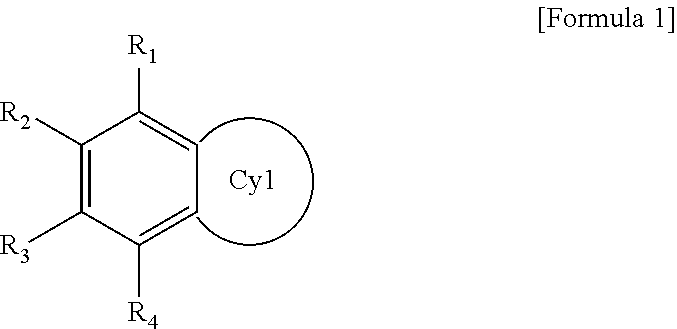
C00017

C00018

C00019

C00020

C00021
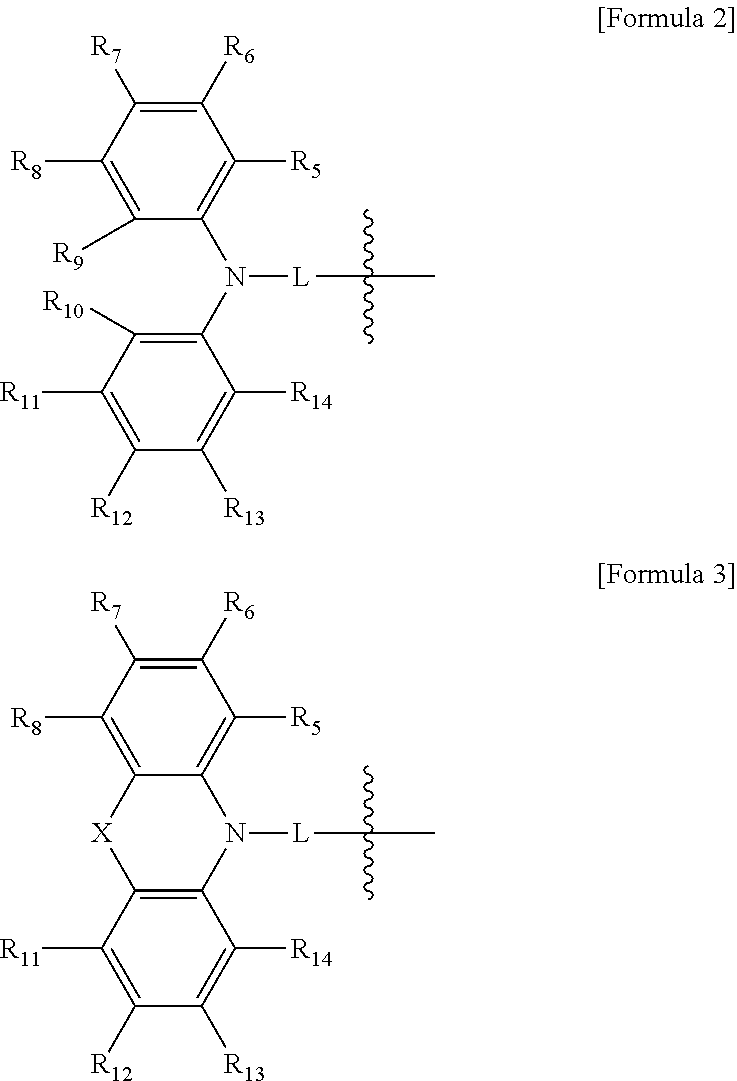
C00022

C00023
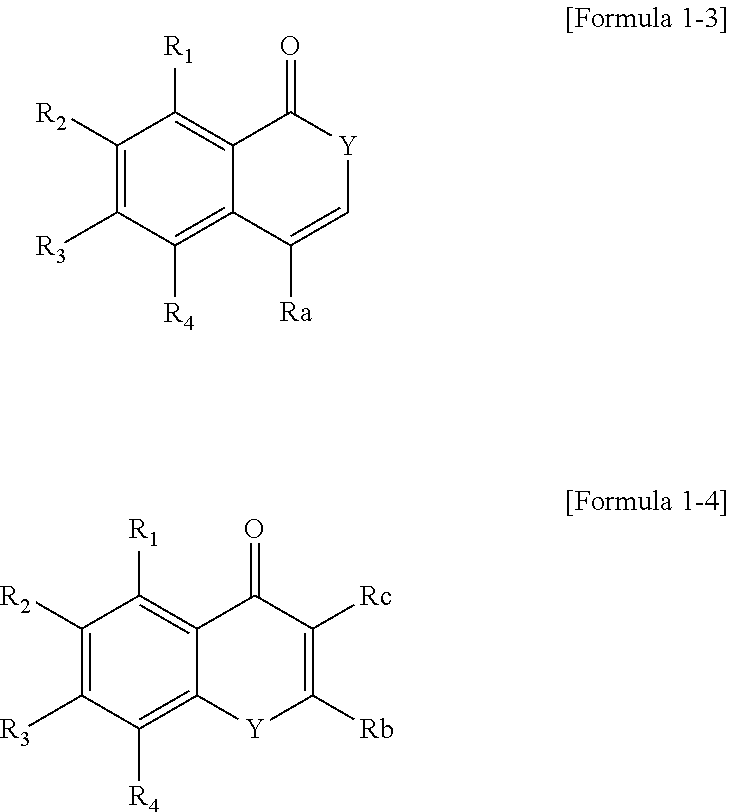
C00024

C00025

C00026
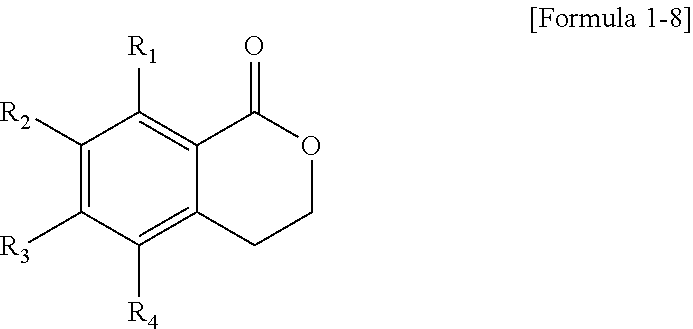
C00027

C00028

C00029

C00030

C00031

C00032

C00033

C00034

C00035

C00036

C00037

C00038

C00039

C00040

C00041

C00042
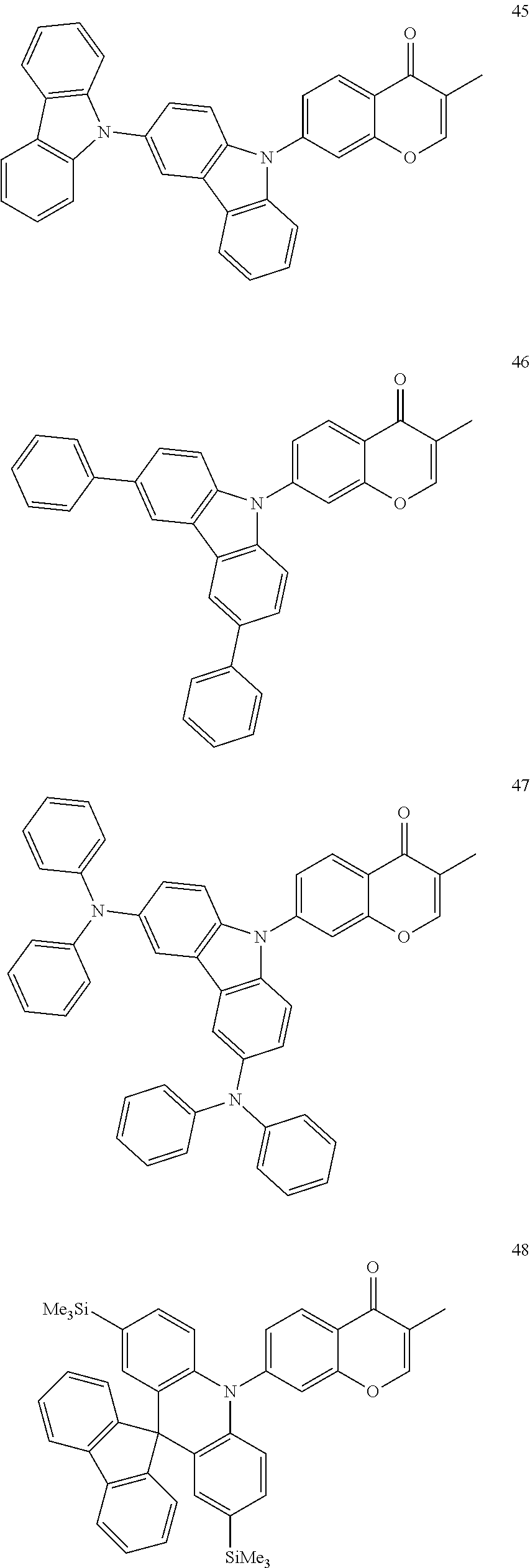
C00043

C00044

C00045

C00046

C00047

C00048
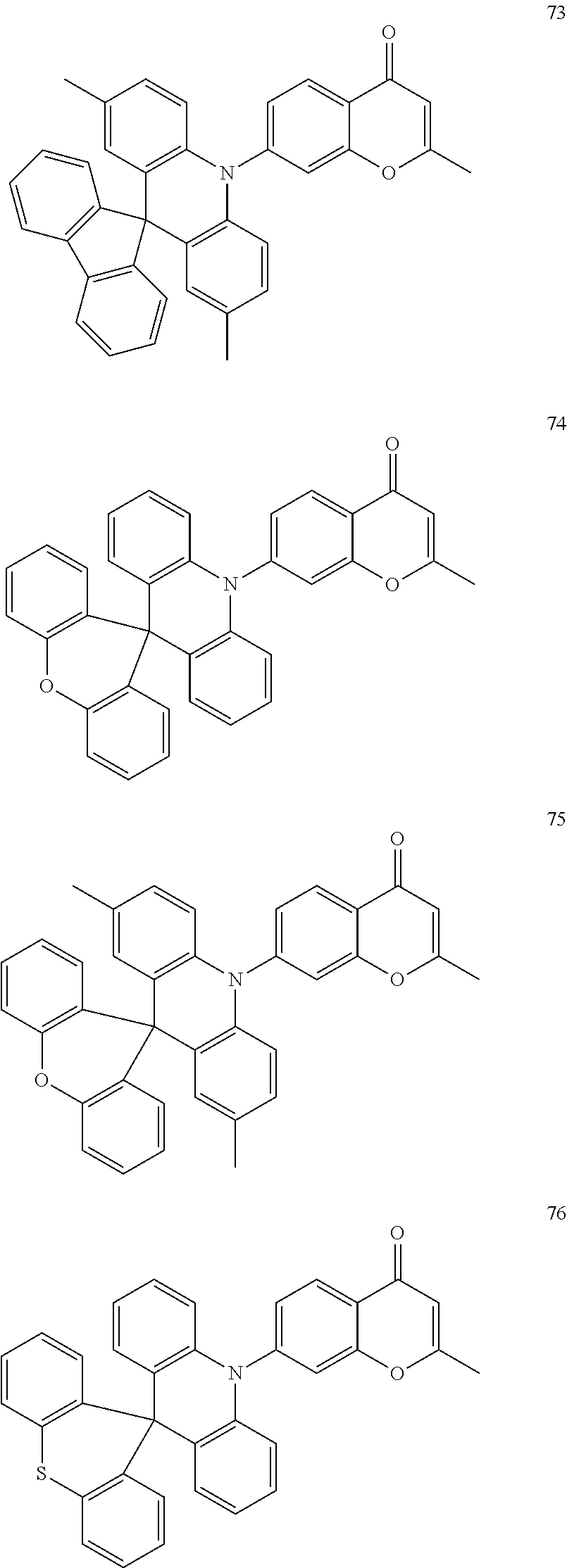
C00049
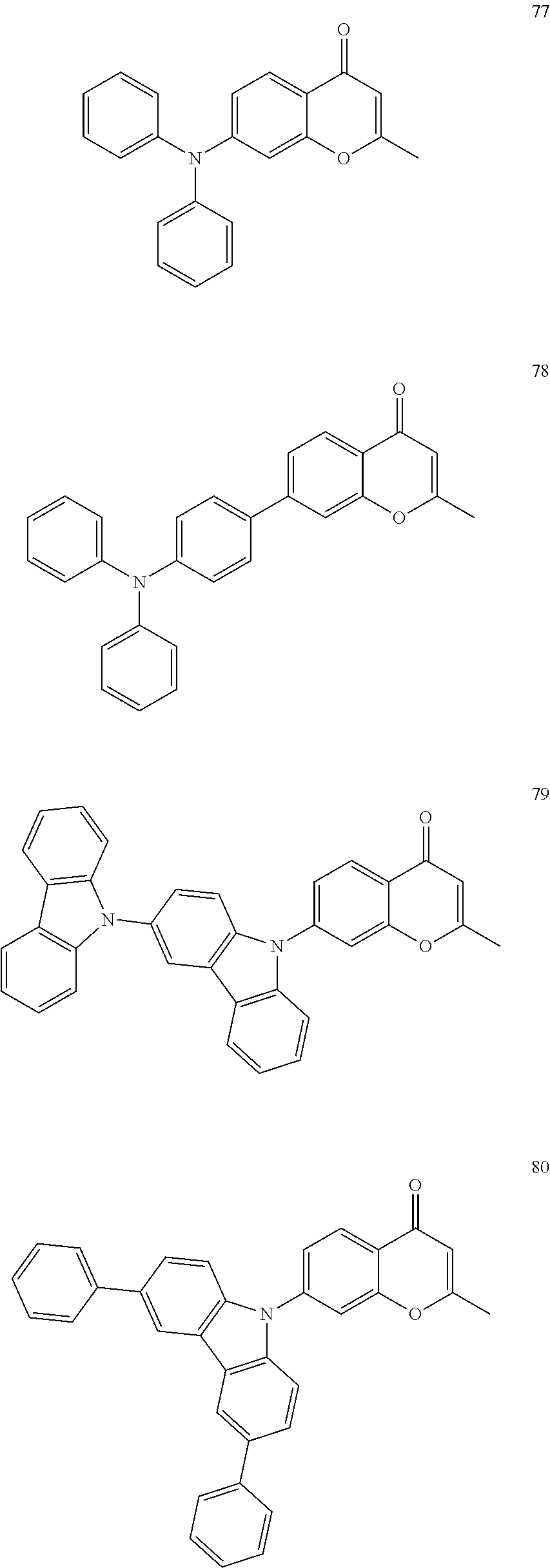
C00050
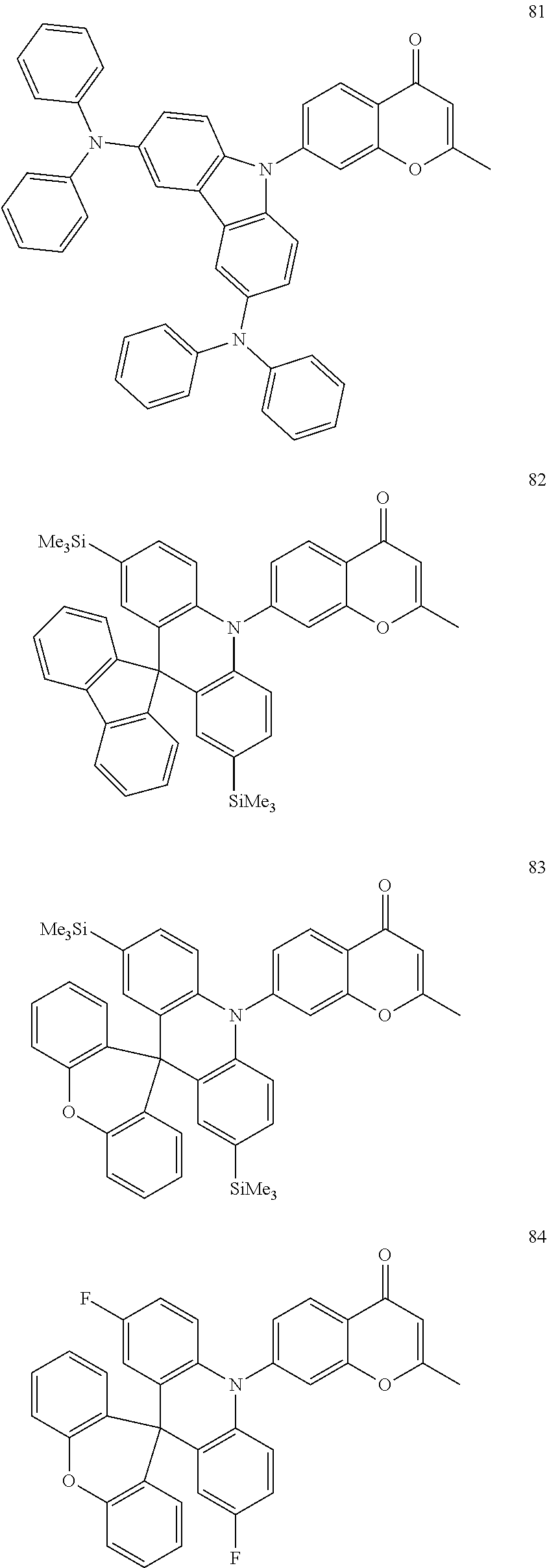
C00051

C00052

C00053

C00054

C00055

C00056

C00057

C00058

C00059

C00060

C00061

C00062

C00063

C00064

C00065

C00066

C00067
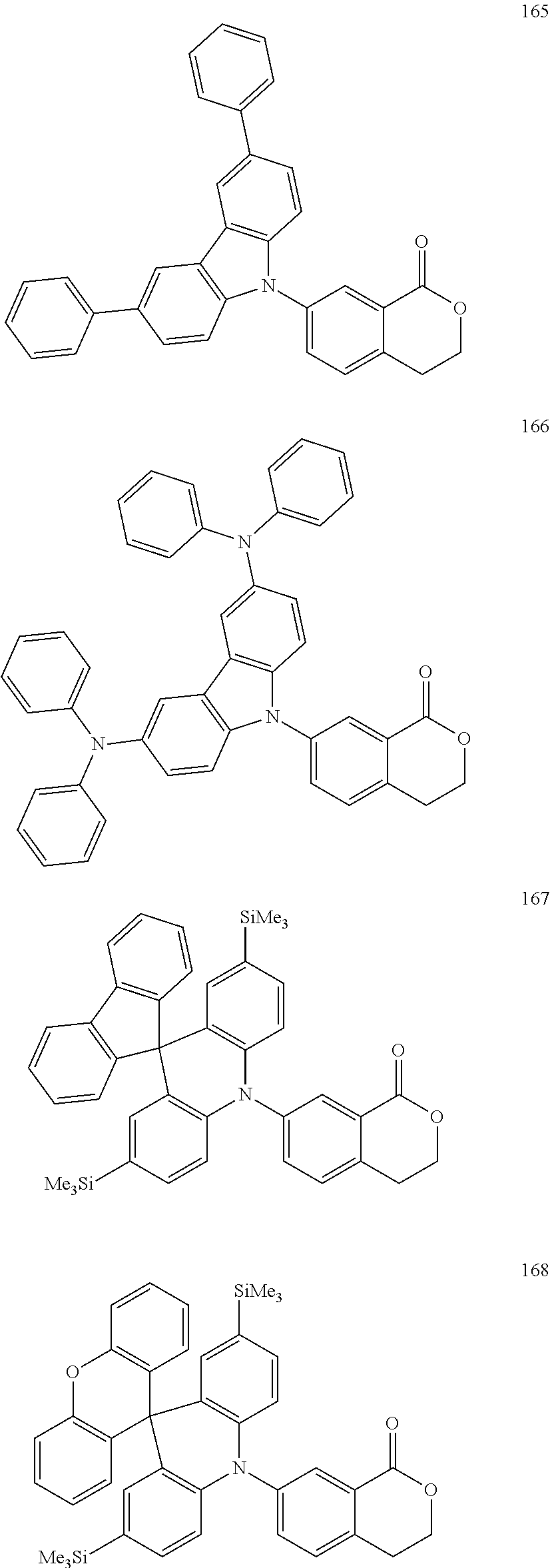
C00068

C00069

C00070

C00071

C00072

C00073

C00074

C00075

C00076

C00077

C00078

C00079

C00080

C00081

C00082

C00083

C00084

C00085

C00086

C00087

C00088

C00089

C00090

C00091

C00092

C00093

C00094

C00095

C00096

C00097

C00098

C00099

C00100

C00101

C00102

C00103

C00104

C00105

C00106

C00107

C00108

C00109
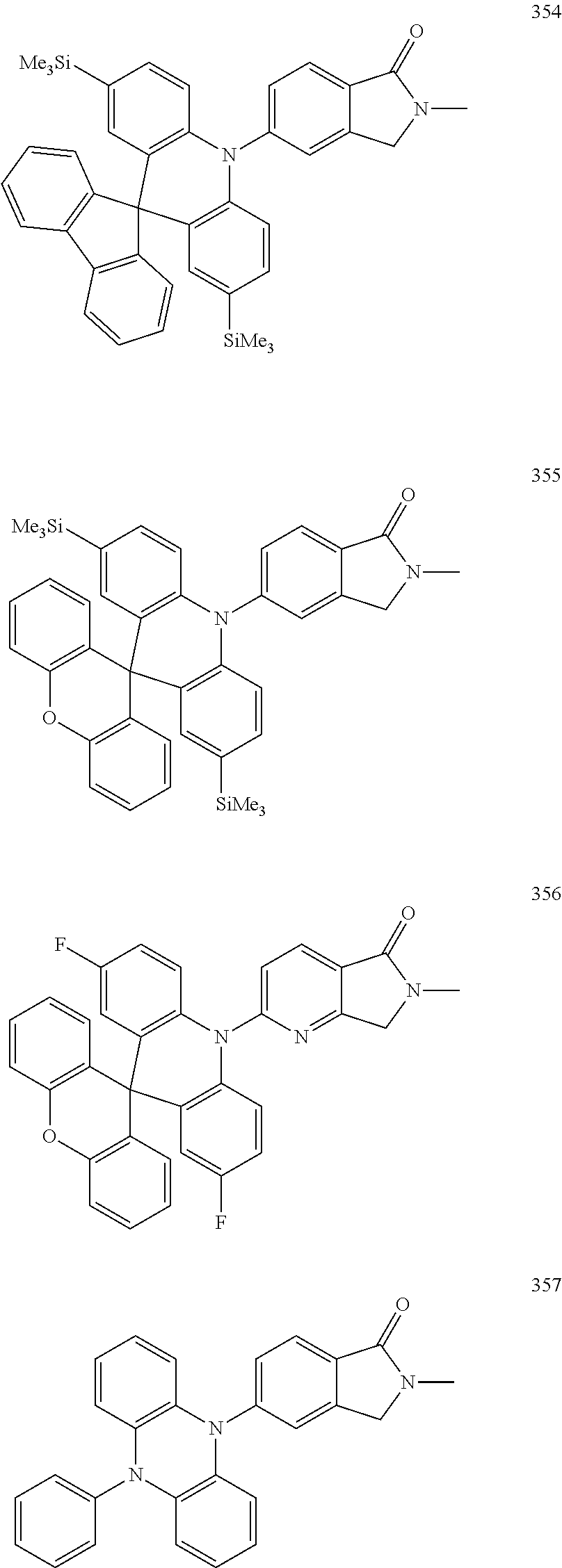
C00110

C00111

C00112

C00113

C00114

C00115

C00116

C00117

C00118

C00119

C00120

C00121

C00122

C00123

C00124

C00125
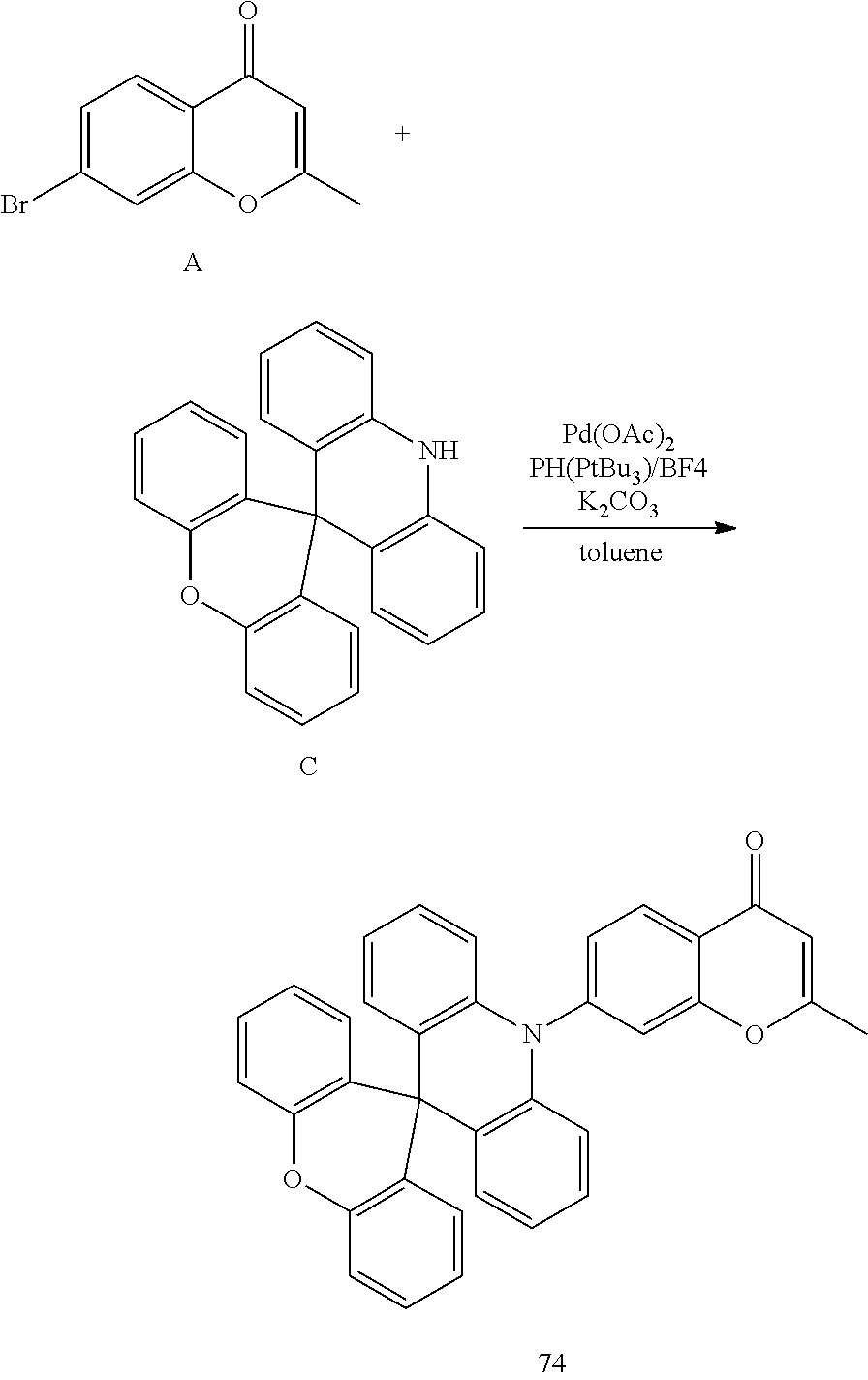
C00126

C00127

C00128

C00129

C00130

C00131

C00132

C00133

C00134

C00135

C00136

C00137

C00138

C00139

C00140

C00141

C00142

C00143

C00144

C00145

C00146

C00147

C00148

C00149

C00150

C00151

C00152

C00153

C00154

C00155

C00156

C00157

C00158

C00159

C00160

C00161

C00162

C00163

C00164

C00165

C00166

C00167

C00168

C00169

C00170

C00171

C00172

C00173

C00174

C00175

C00176

C00177

C00178

C00179

C00180

C00181

C00182

C00183

C00184

C00185

C00186

C00187

C00188

C00189

C00190

C00191

C00192

C00193

C00194

C00195

C00196

C00197

C00198

C00199

C00200

C00201

C00202

C00203

C00204

C00205

C00206

C00207

C00208

C00209

C00210

C00211

C00212

C00213

C00214

C00215

C00216

C00217

C00218

C00219

C00220

C00221

C00222

C00223

C00224

C00225

C00226

C00227

C00228

C00229

C00230

C00231

C00232

C00233

C00234

C00235

C00236

C00237

C00238

C00239

C00240

C00241

C00242

C00243

C00244

C00245

C00246

C00247

C00248

C00249

C00250
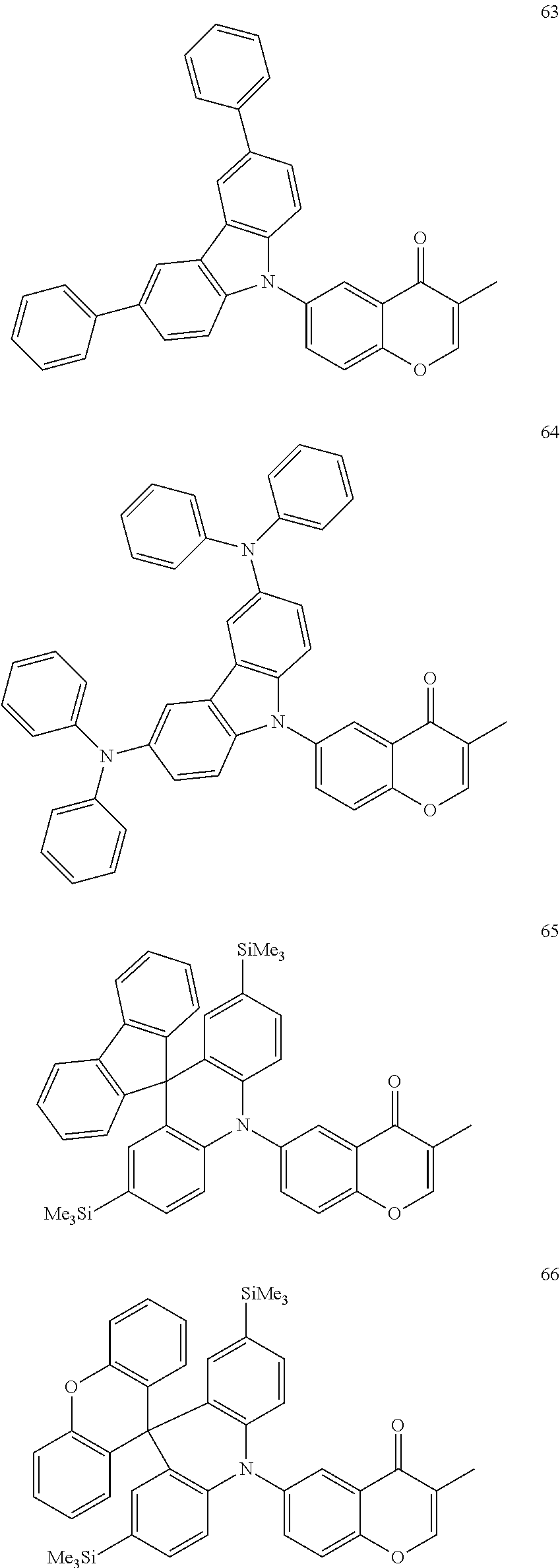
C00251

C00252

C00253
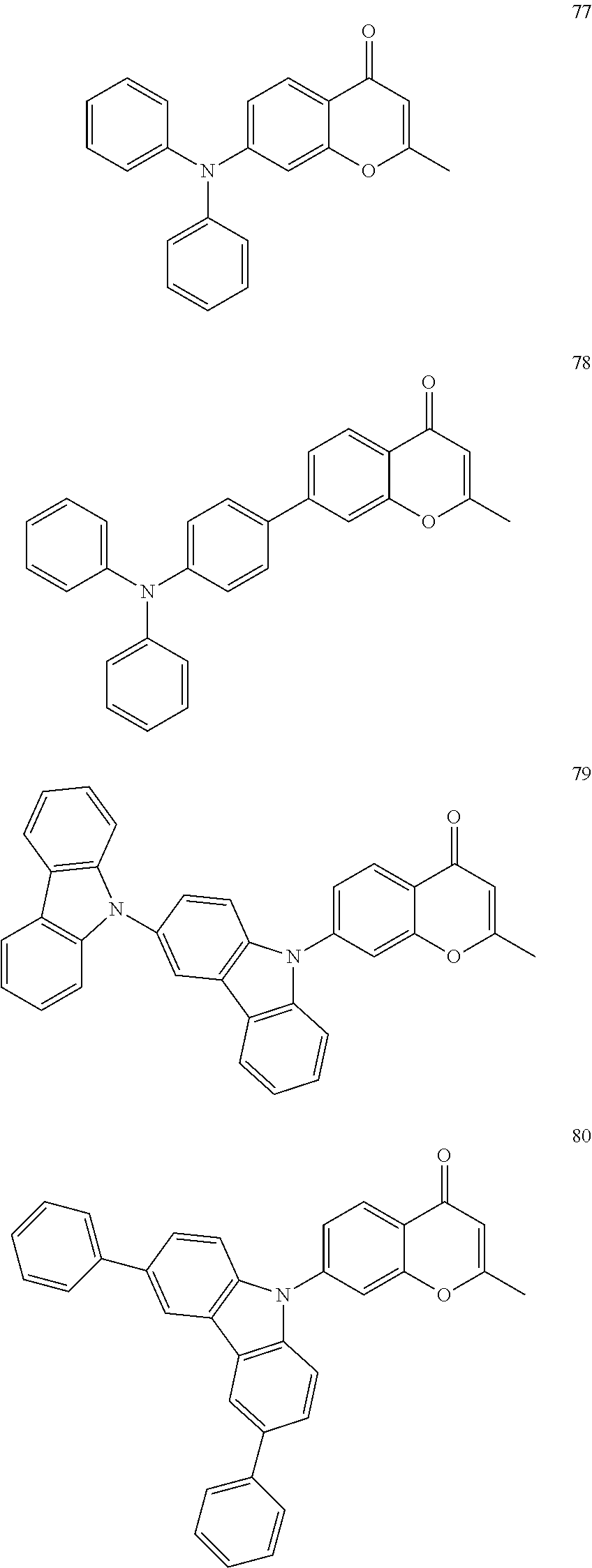
C00254

C00255

C00256

C00257
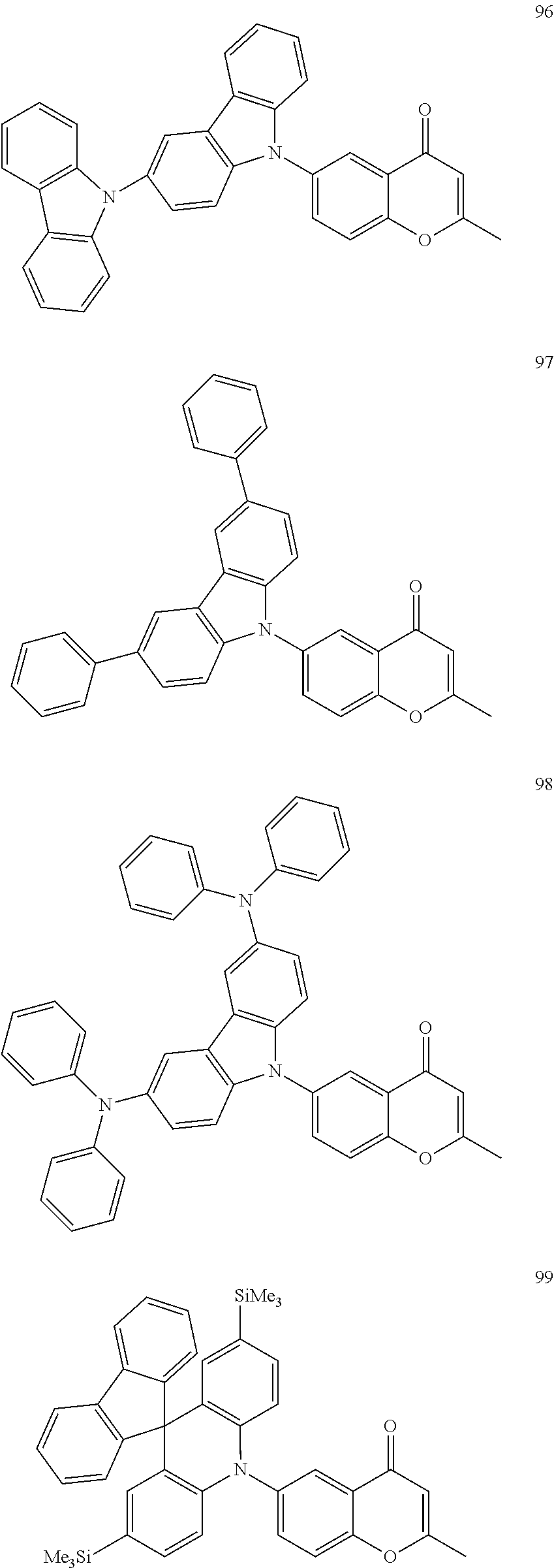
C00258

C00259

C00260

C00261

C00262

C00263

C00264

C00265

C00266

C00267

C00268

C00269

C00270

C00271

C00272

C00273

C00274

C00275

C00276

C00277

C00278

C00279

C00280

C00281

C00282

C00283

C00284

C00285

C00286

C00287

C00288

C00289

C00290

C00291

C00292

C00293

C00294

C00295

C00296

C00297

C00298

C00299

C00300

C00301

C00302

C00303

C00304
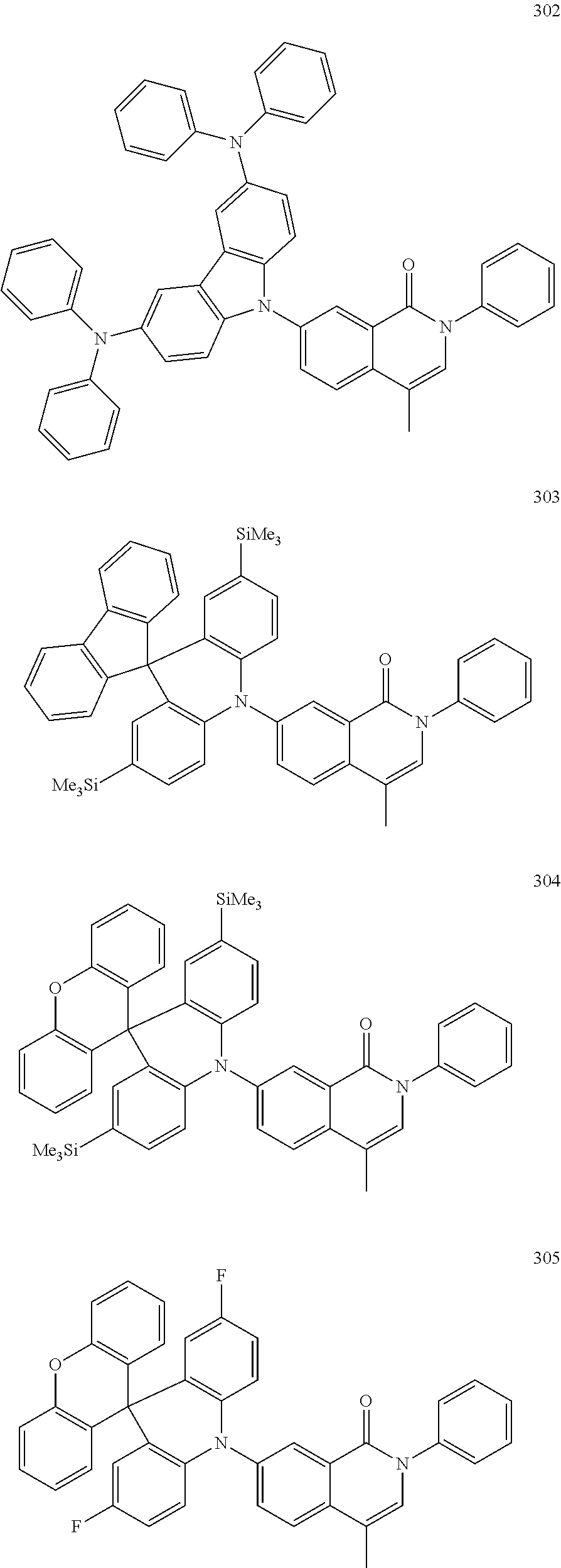
C00305

C00306

C00307

C00308

C00309

C00310

C00311

C00312

C00313

C00314

C00315

C00316

C00317

C00318

C00319

C00320

C00321

C00322

C00323

C00324

C00325

C00326

C00327

D00001

XML
uspto.report is an independent third-party trademark research tool that is not affiliated, endorsed, or sponsored by the United States Patent and Trademark Office (USPTO) or any other governmental organization. The information provided by uspto.report is based on publicly available data at the time of writing and is intended for informational purposes only.
While we strive to provide accurate and up-to-date information, we do not guarantee the accuracy, completeness, reliability, or suitability of the information displayed on this site. The use of this site is at your own risk. Any reliance you place on such information is therefore strictly at your own risk.
All official trademark data, including owner information, should be verified by visiting the official USPTO website at www.uspto.gov. This site is not intended to replace professional legal advice and should not be used as a substitute for consulting with a legal professional who is knowledgeable about trademark law.